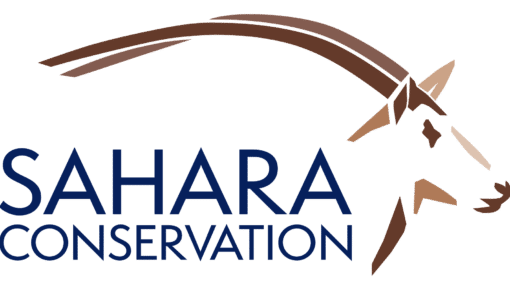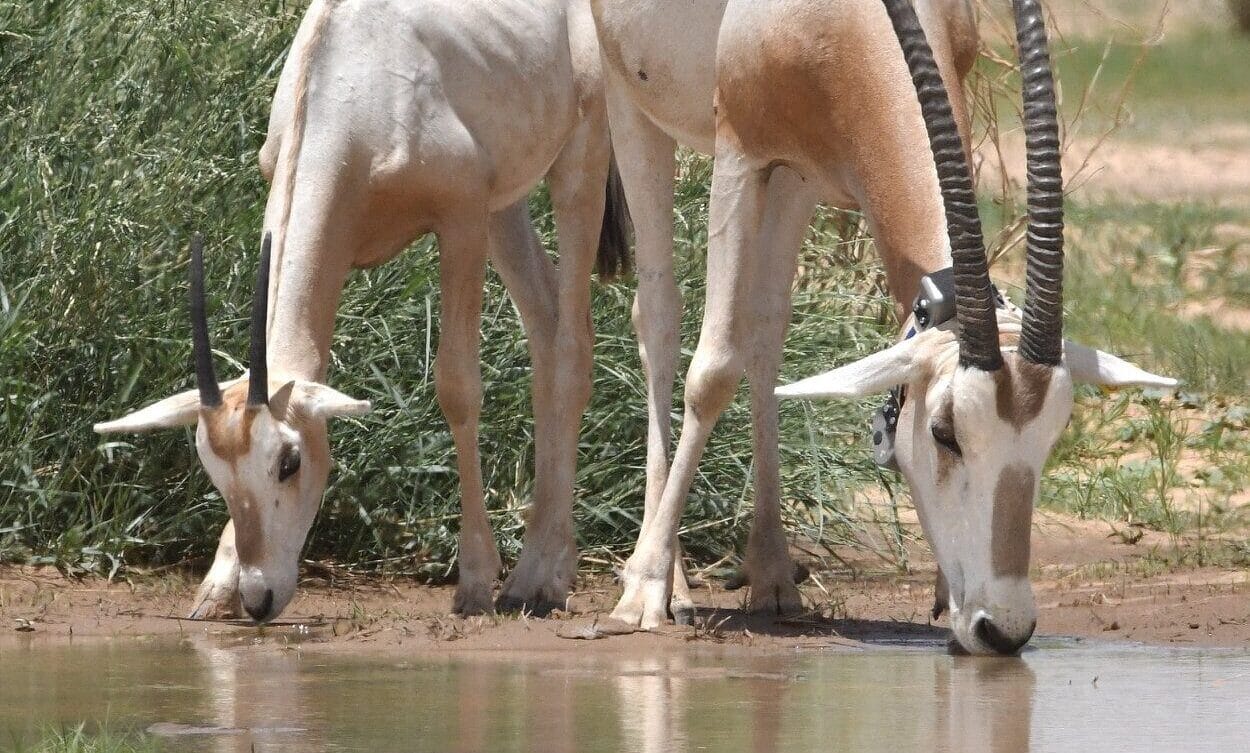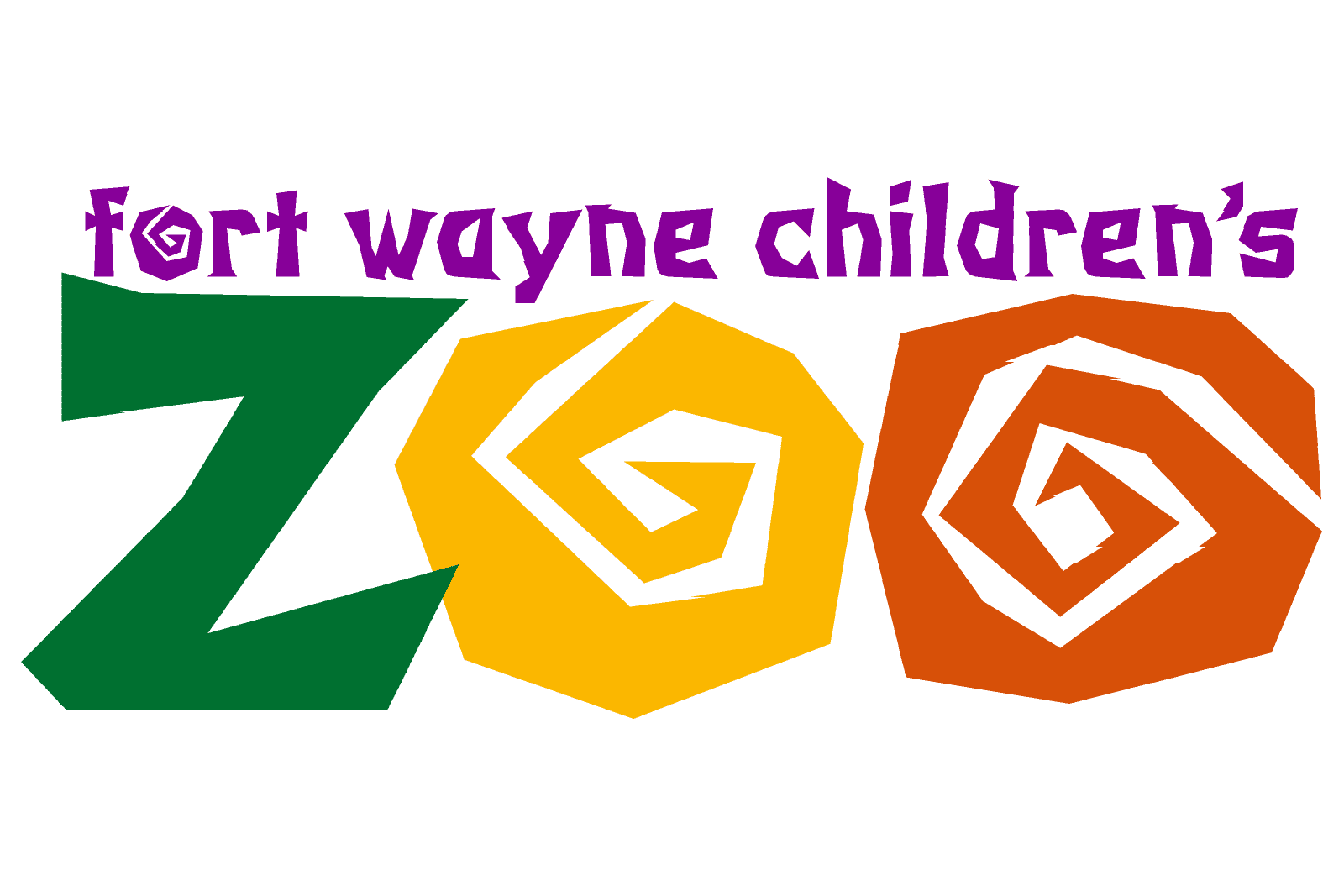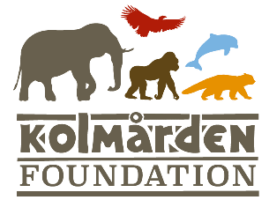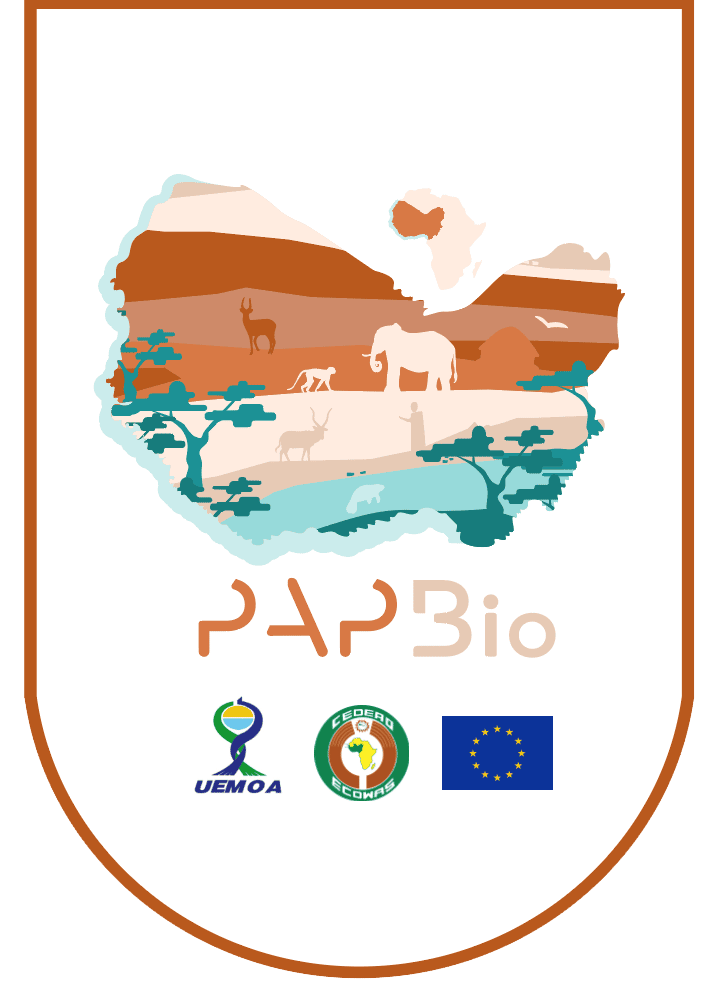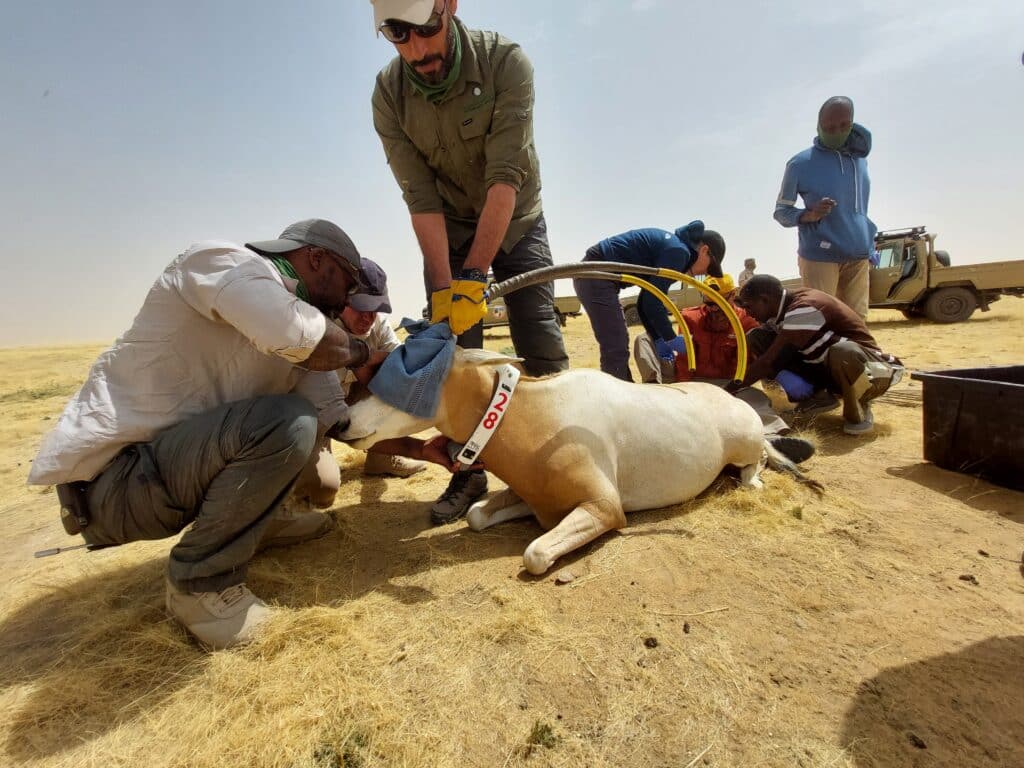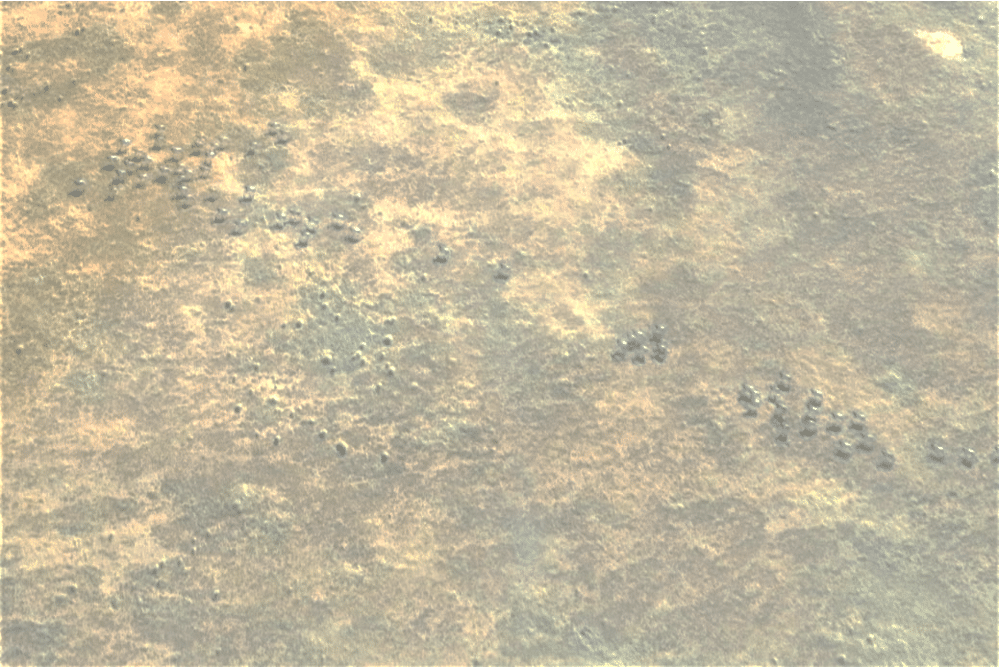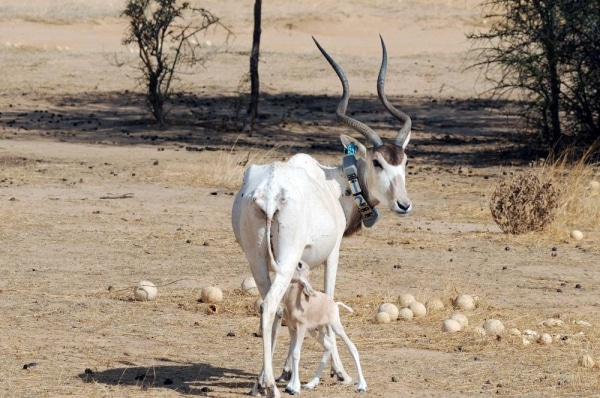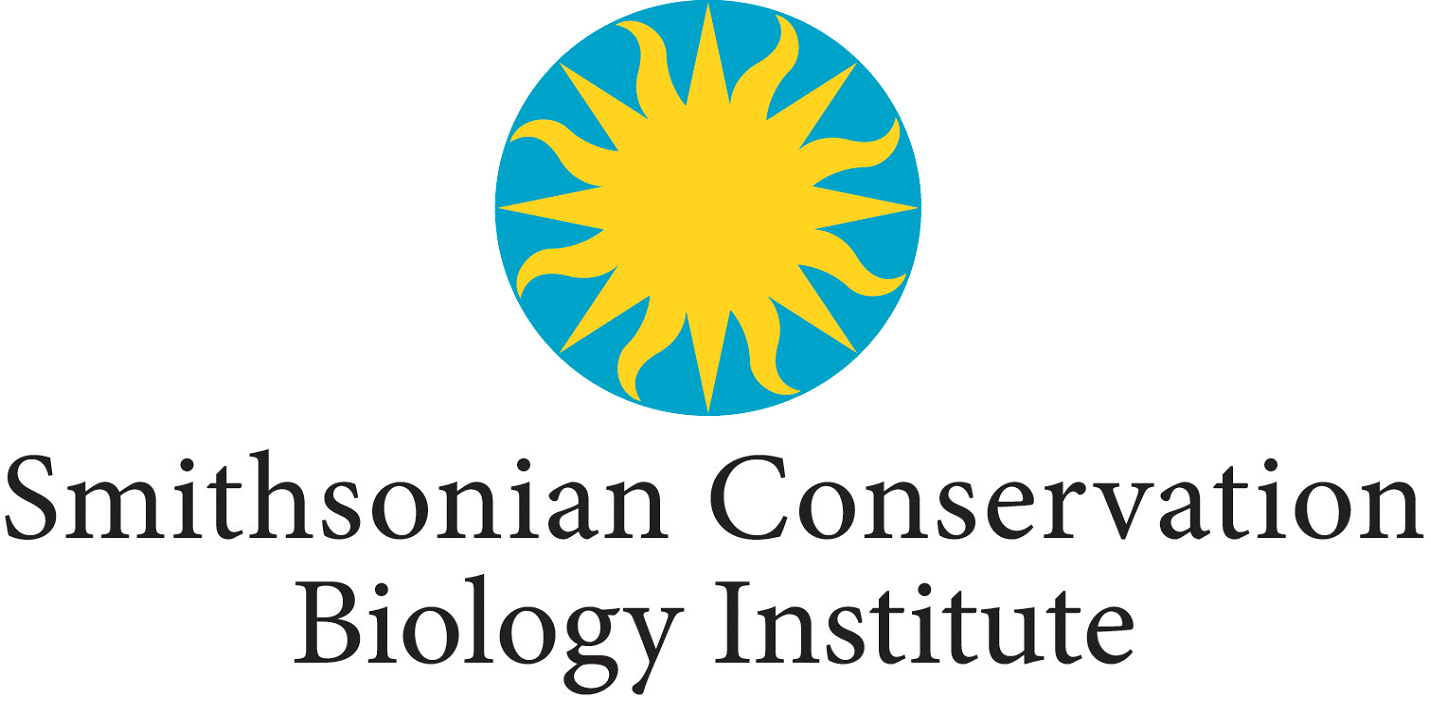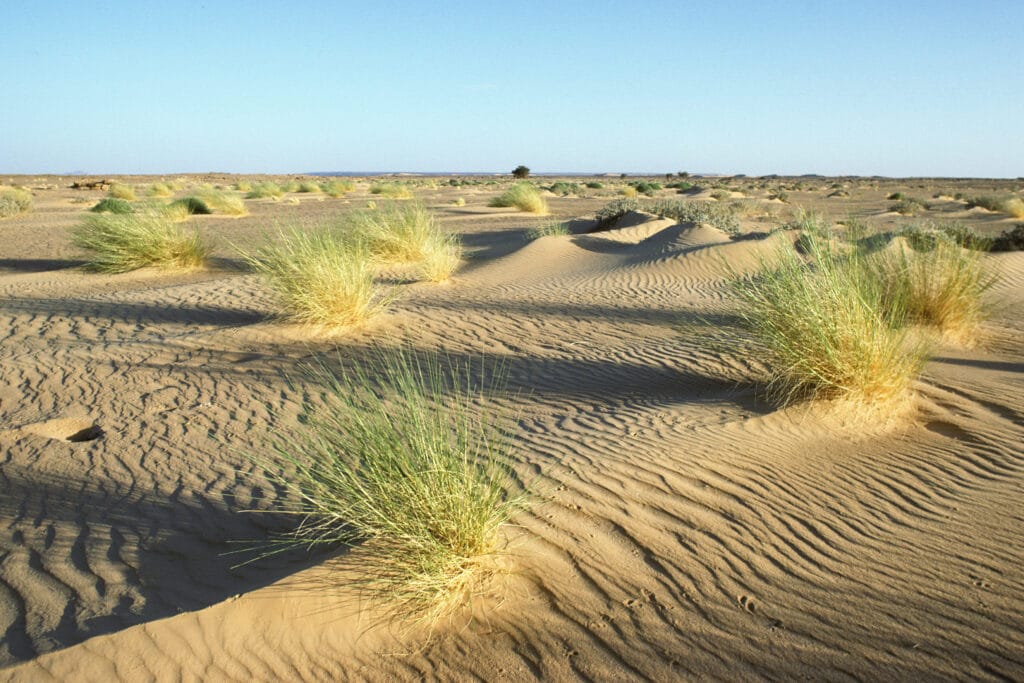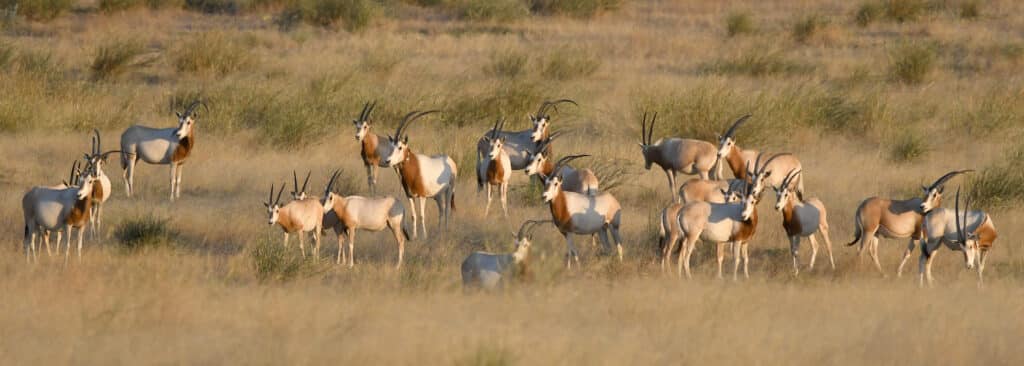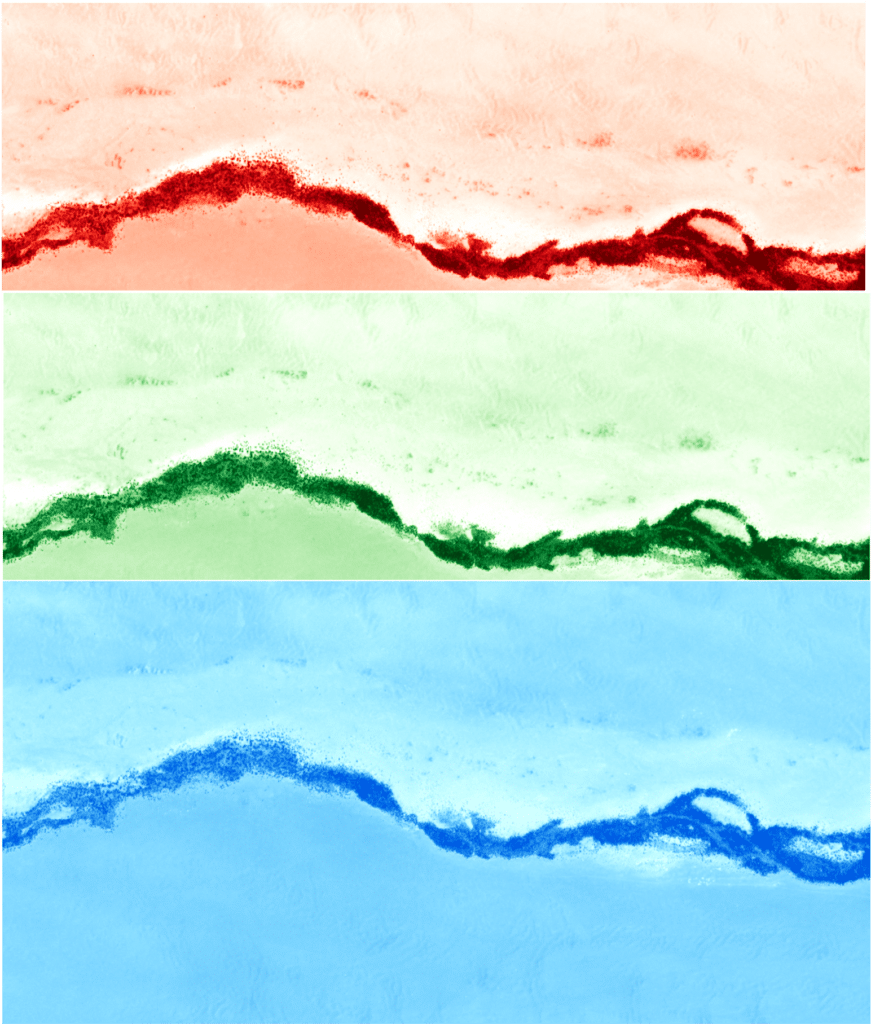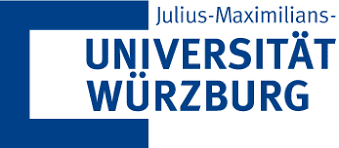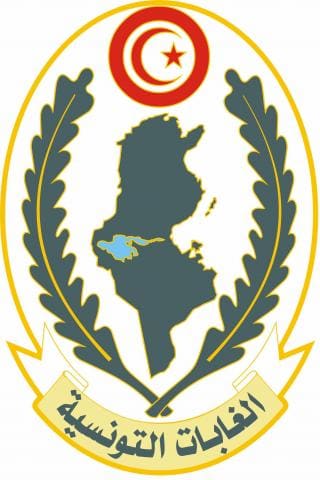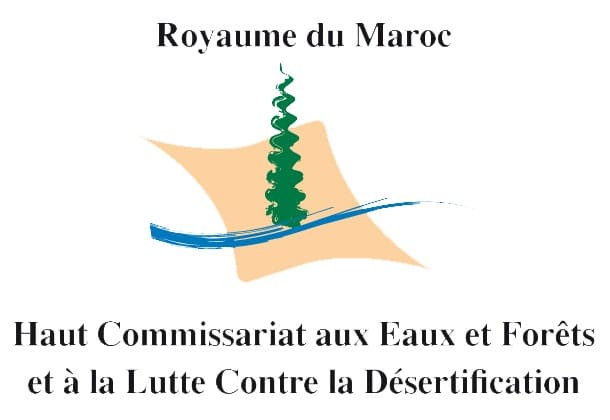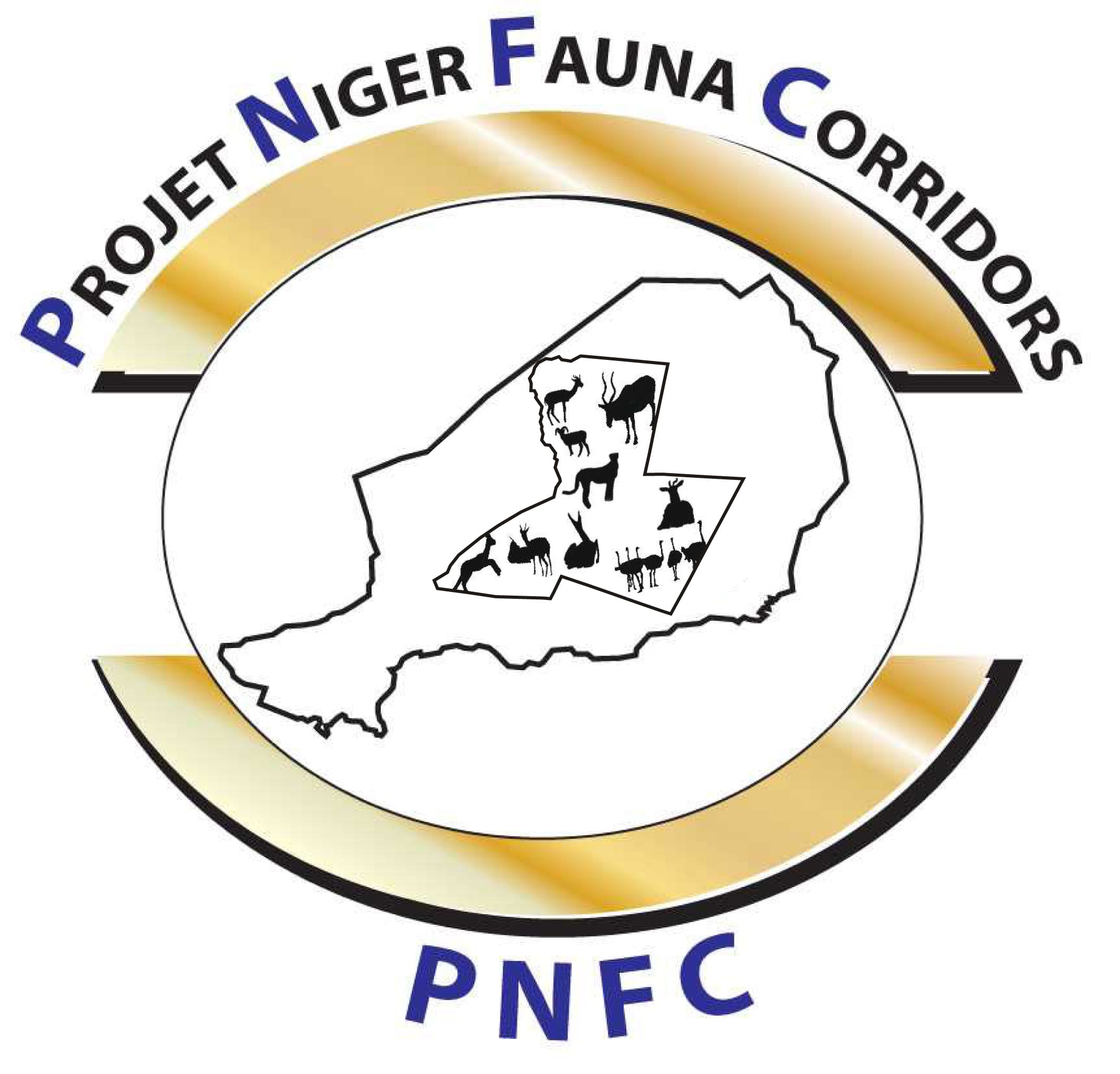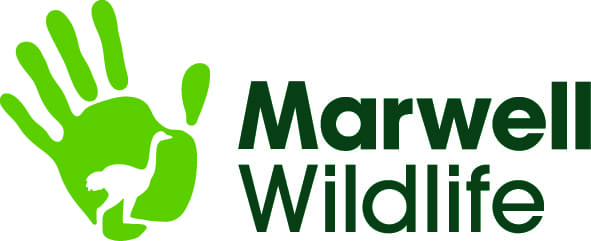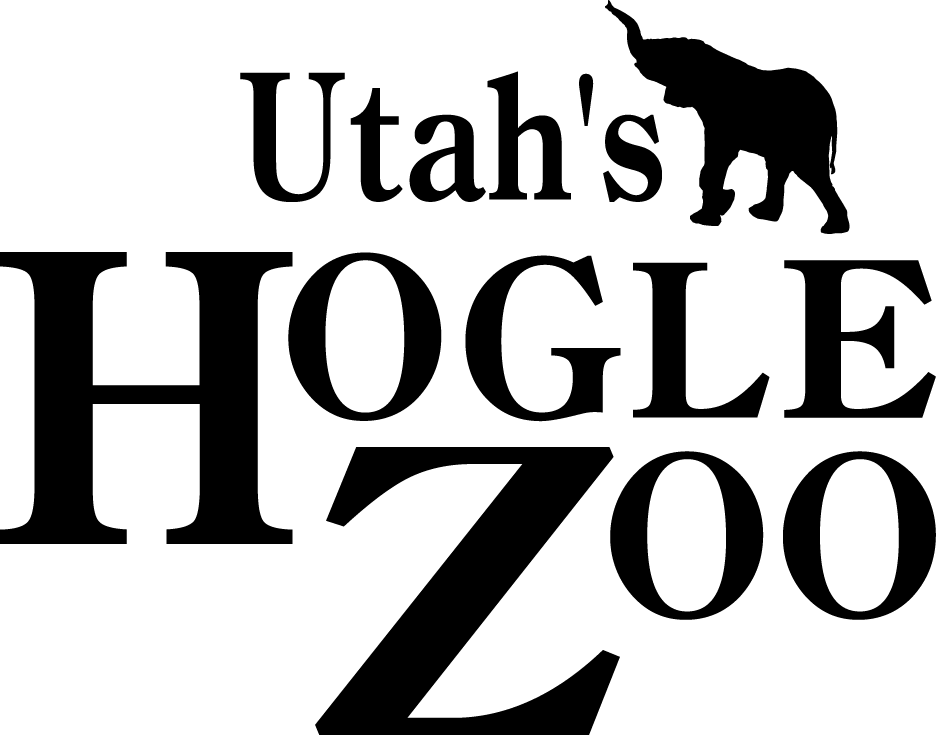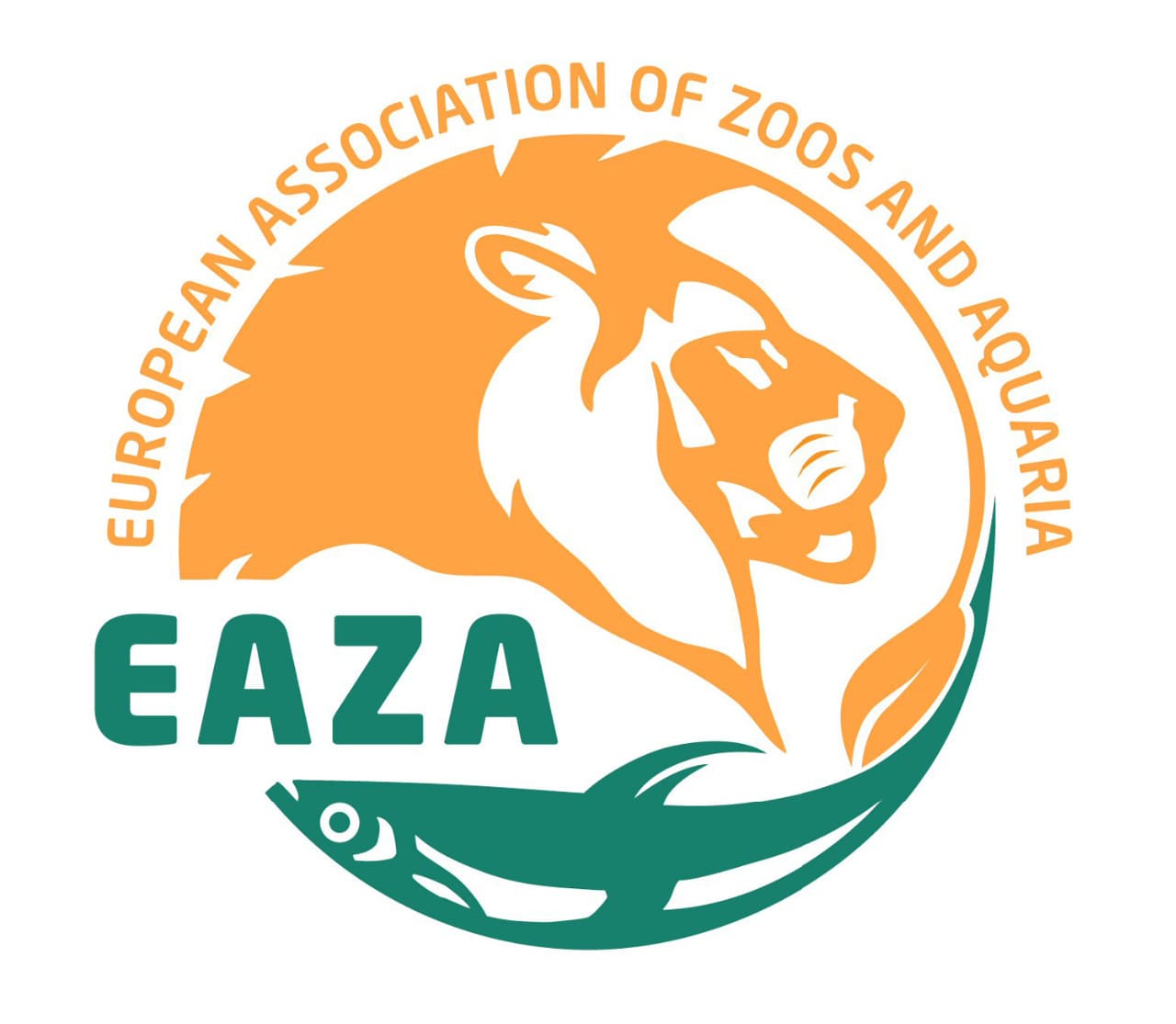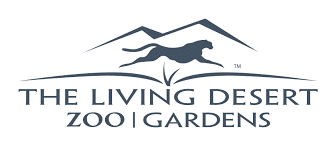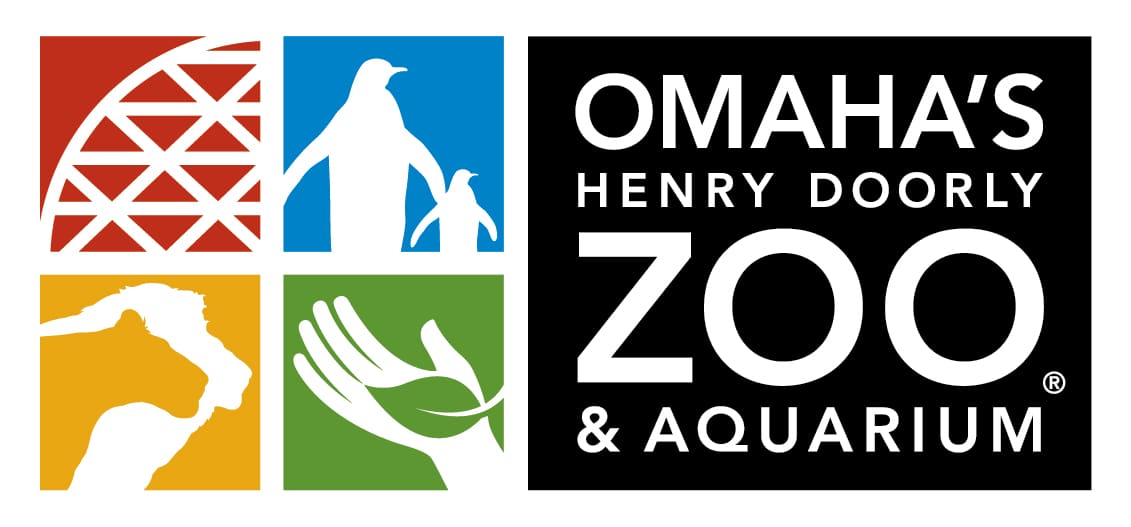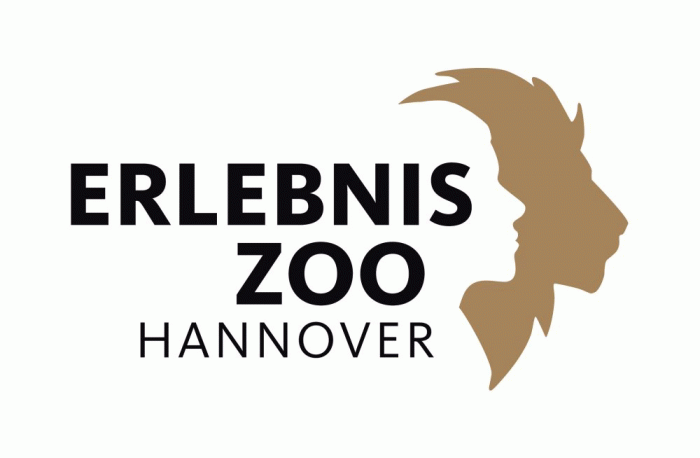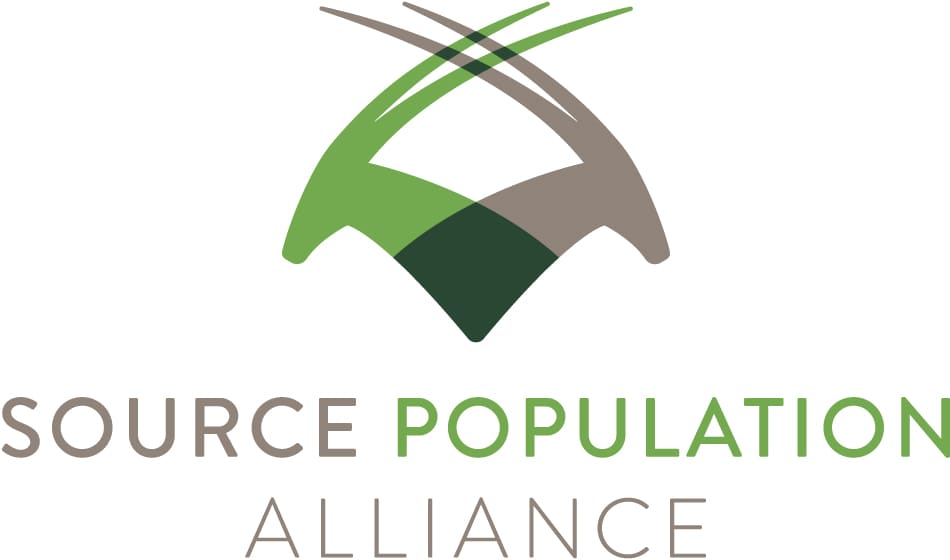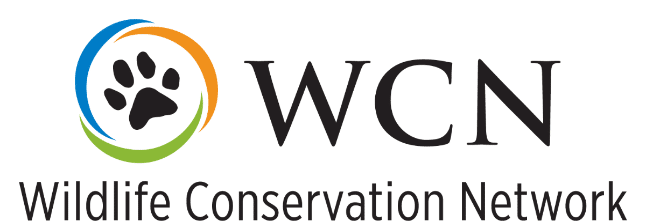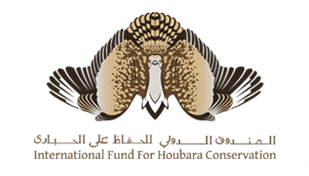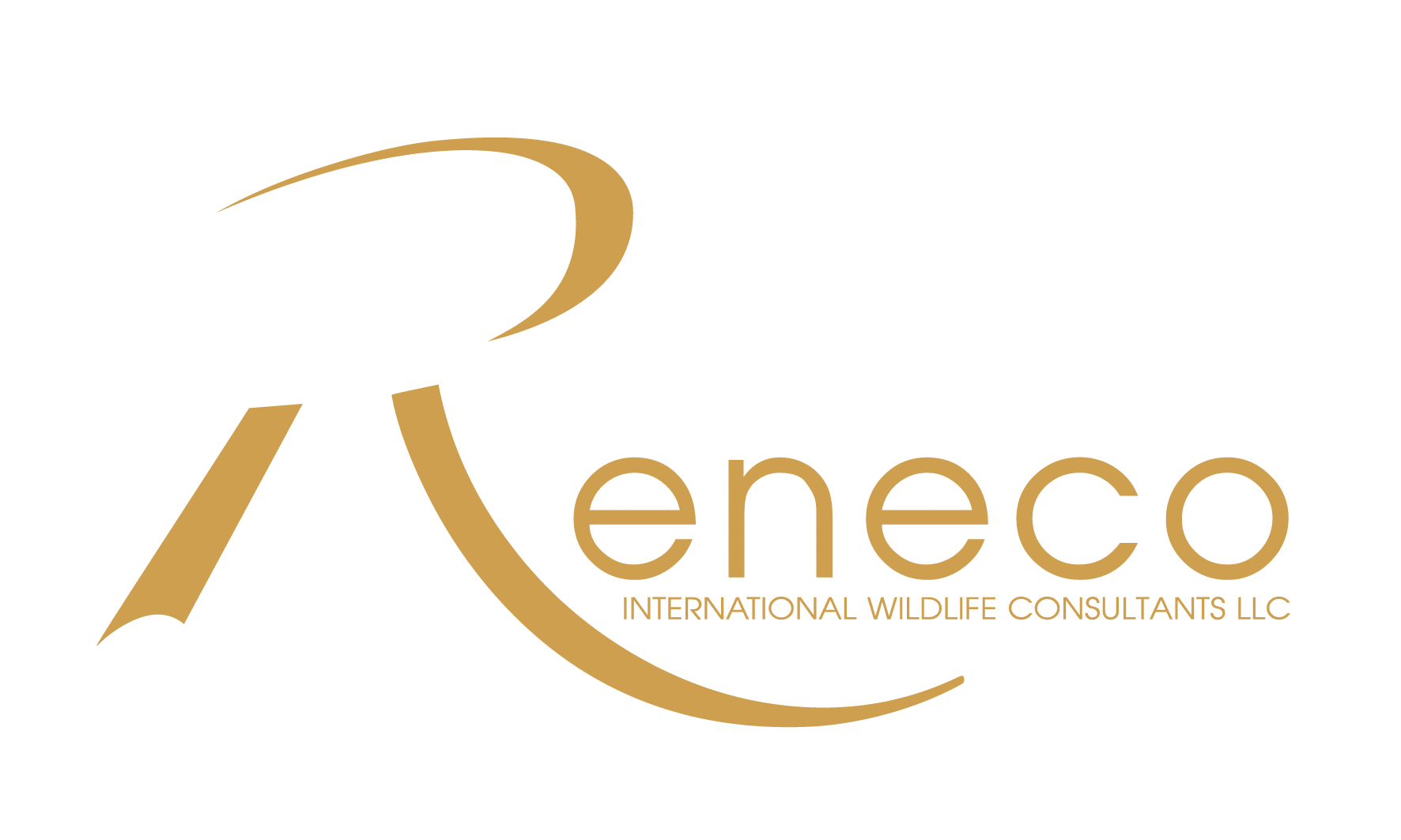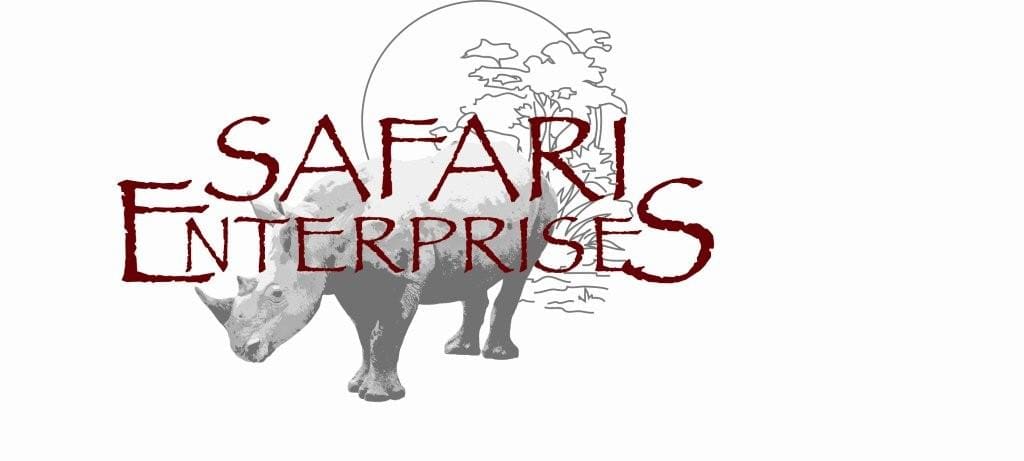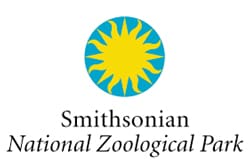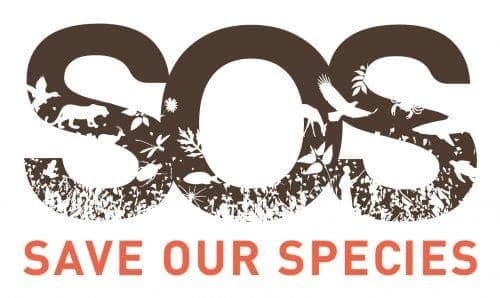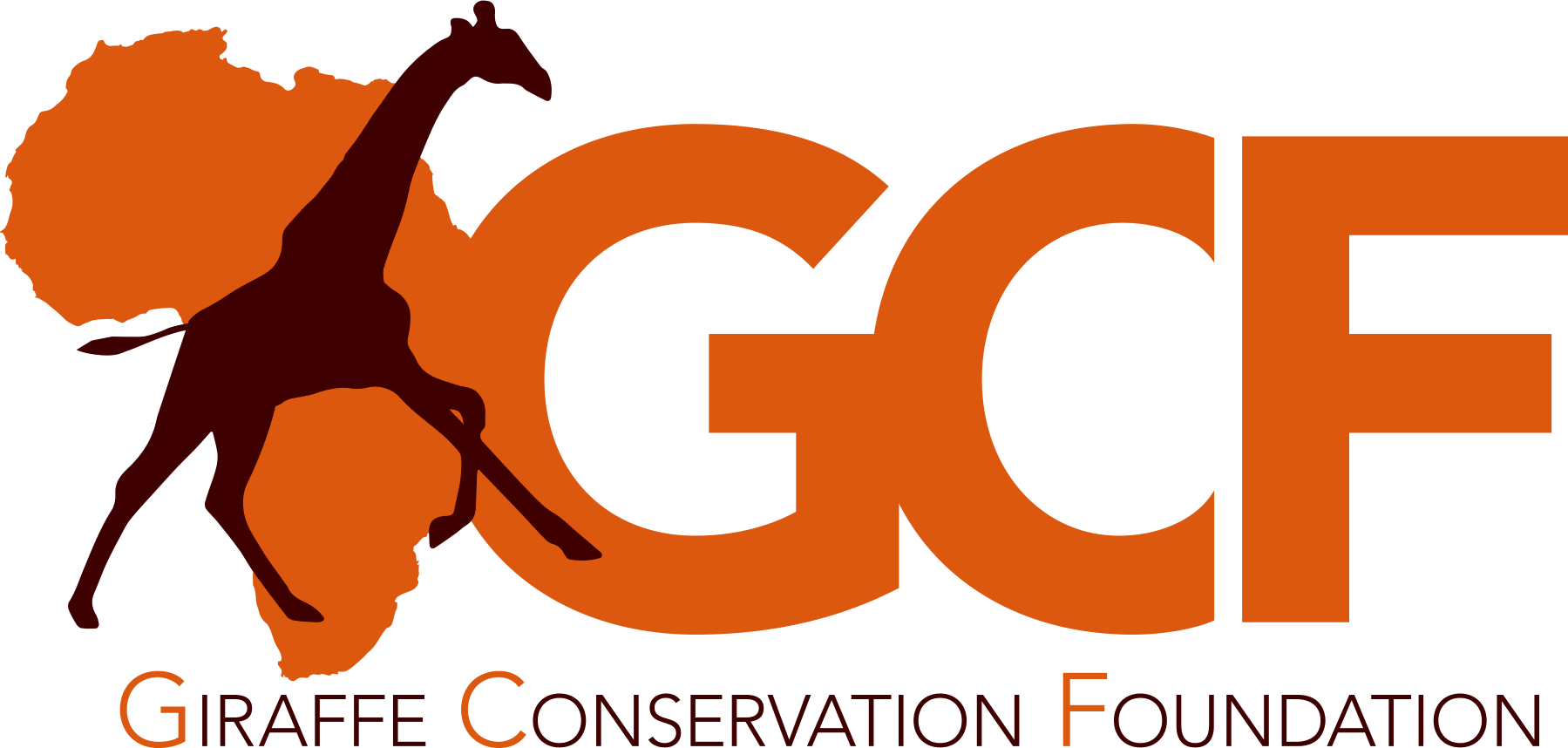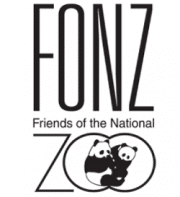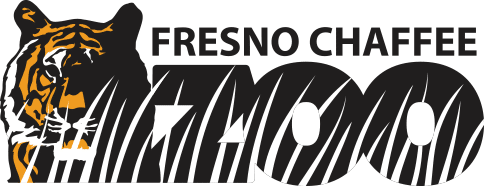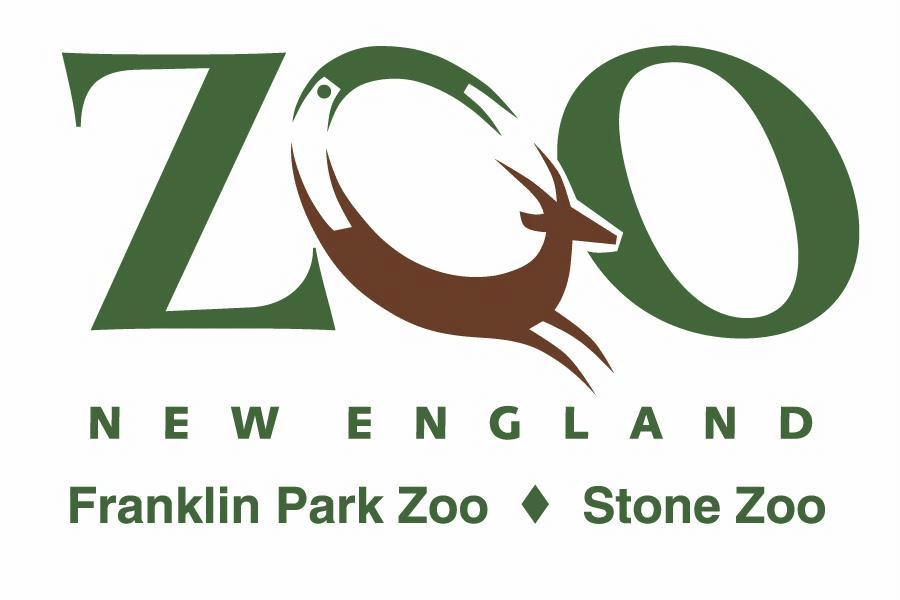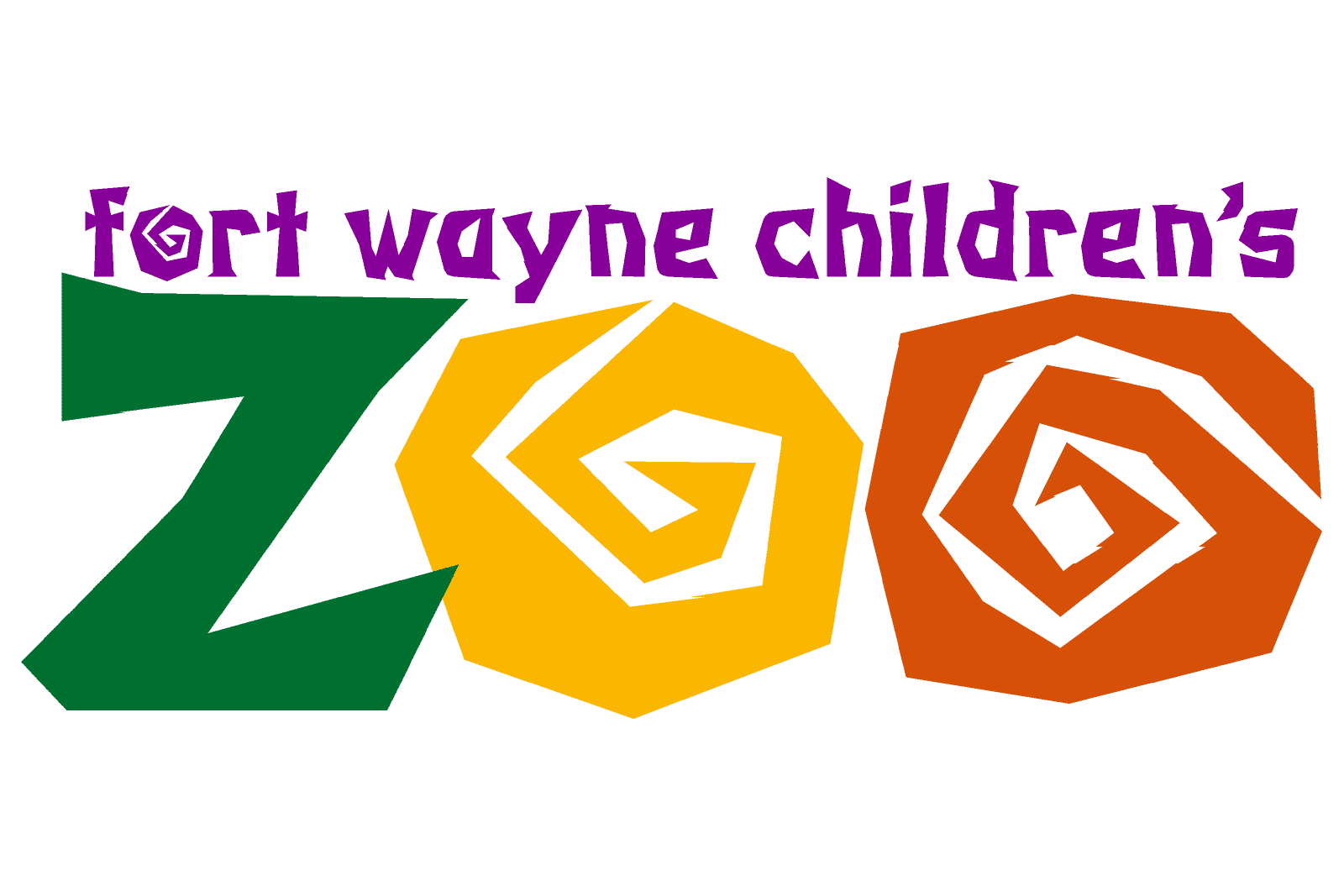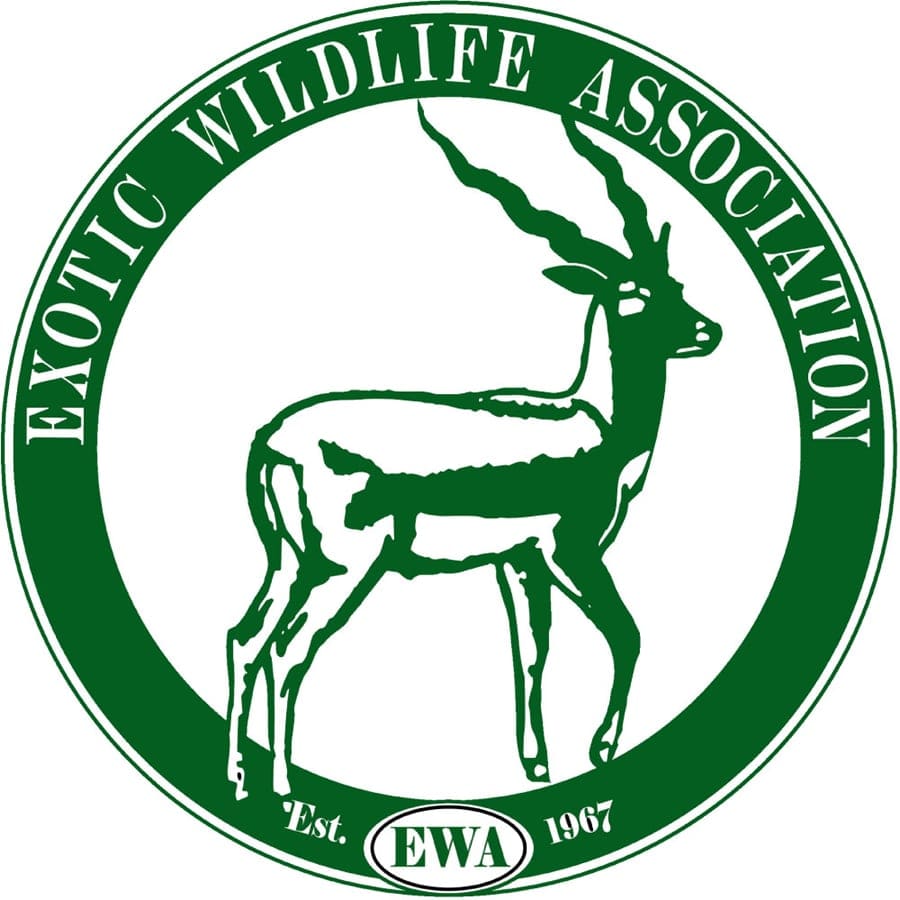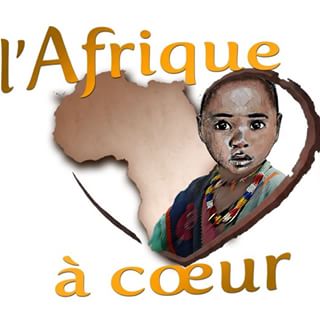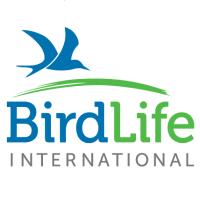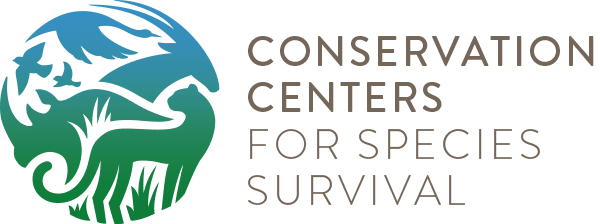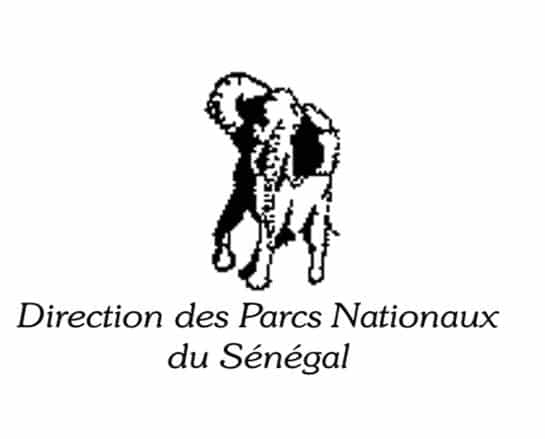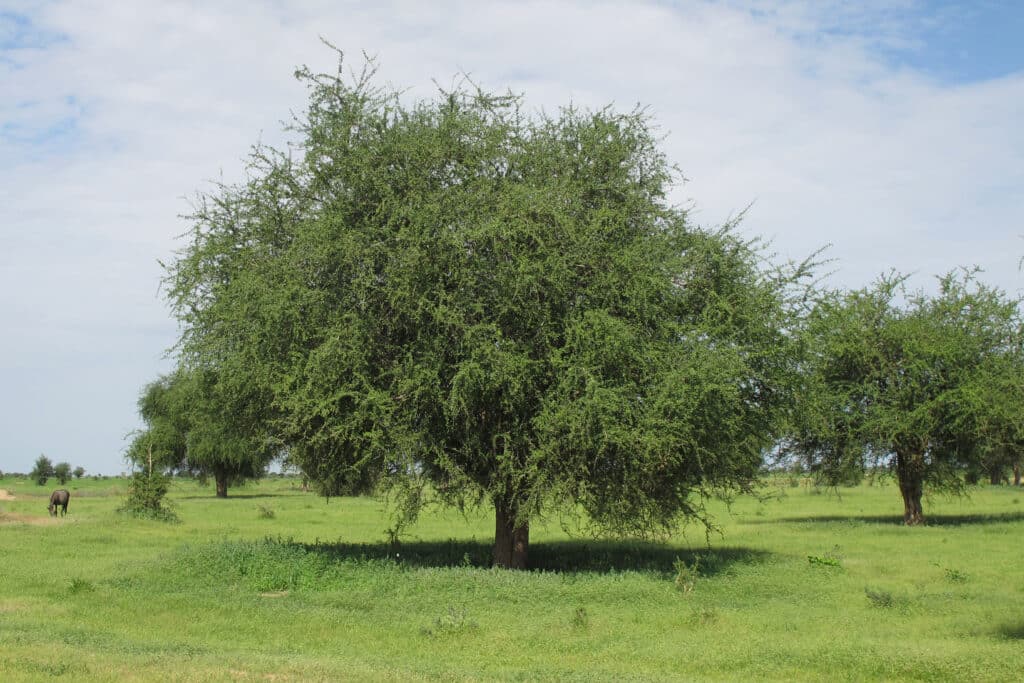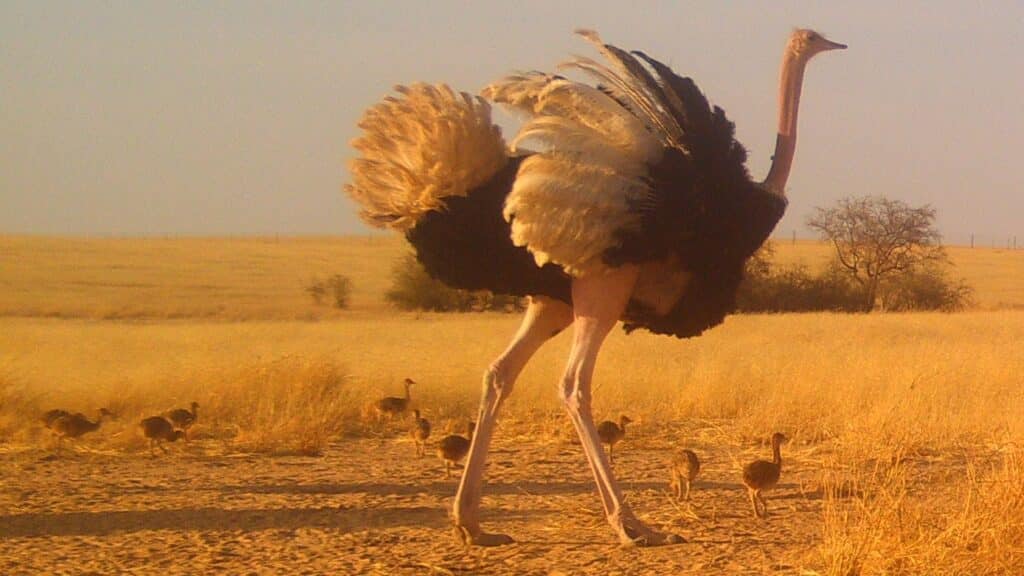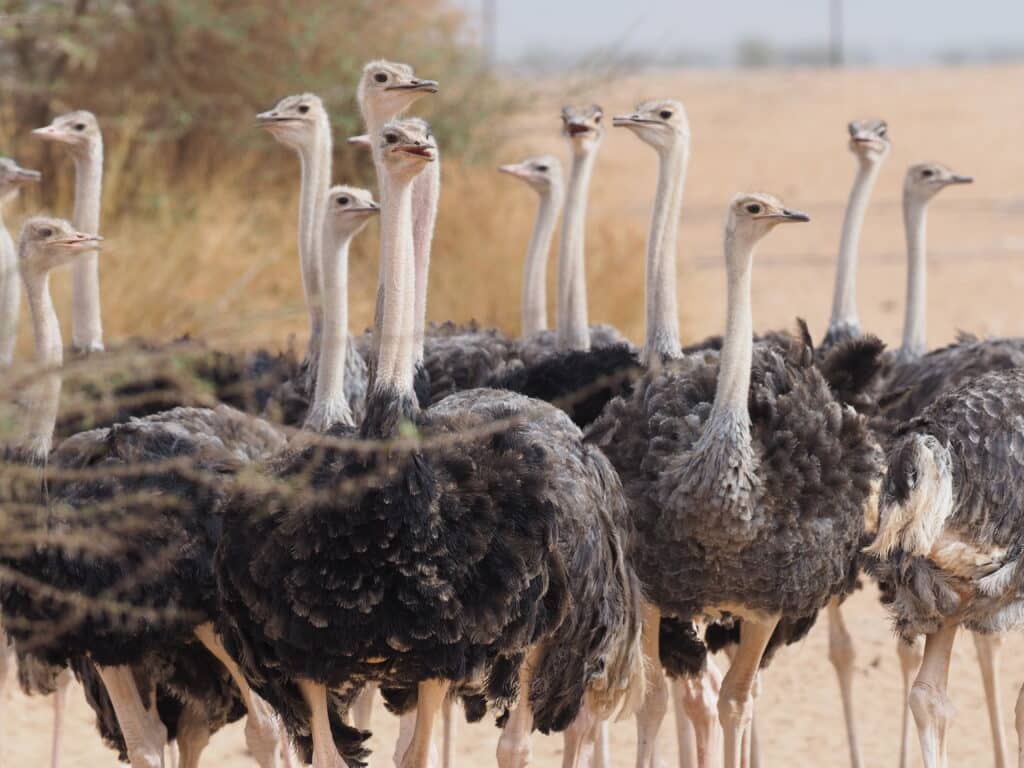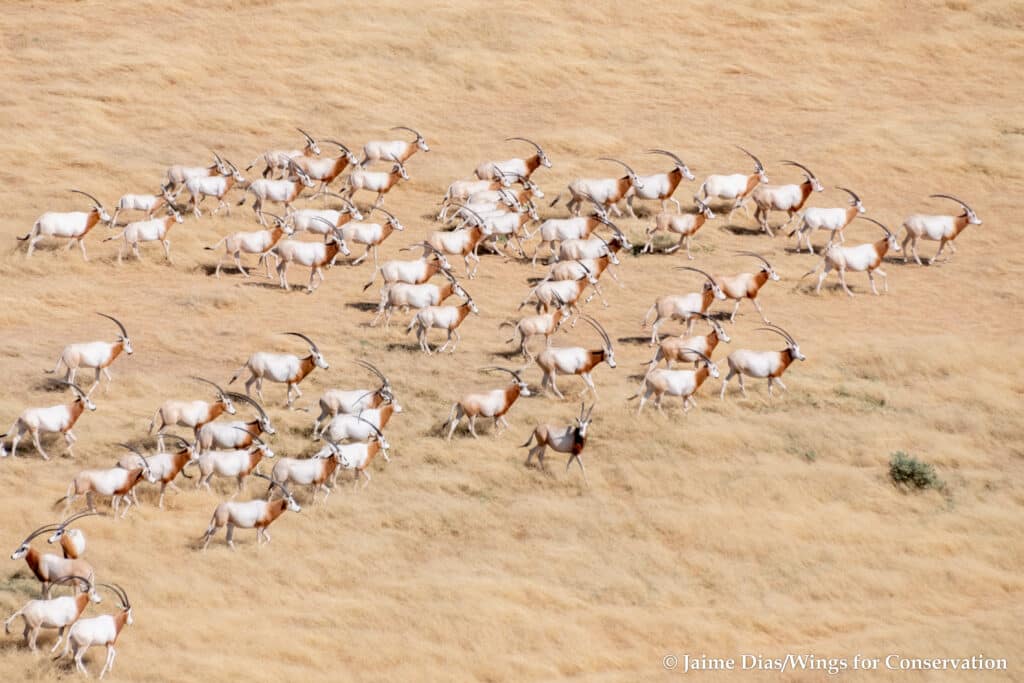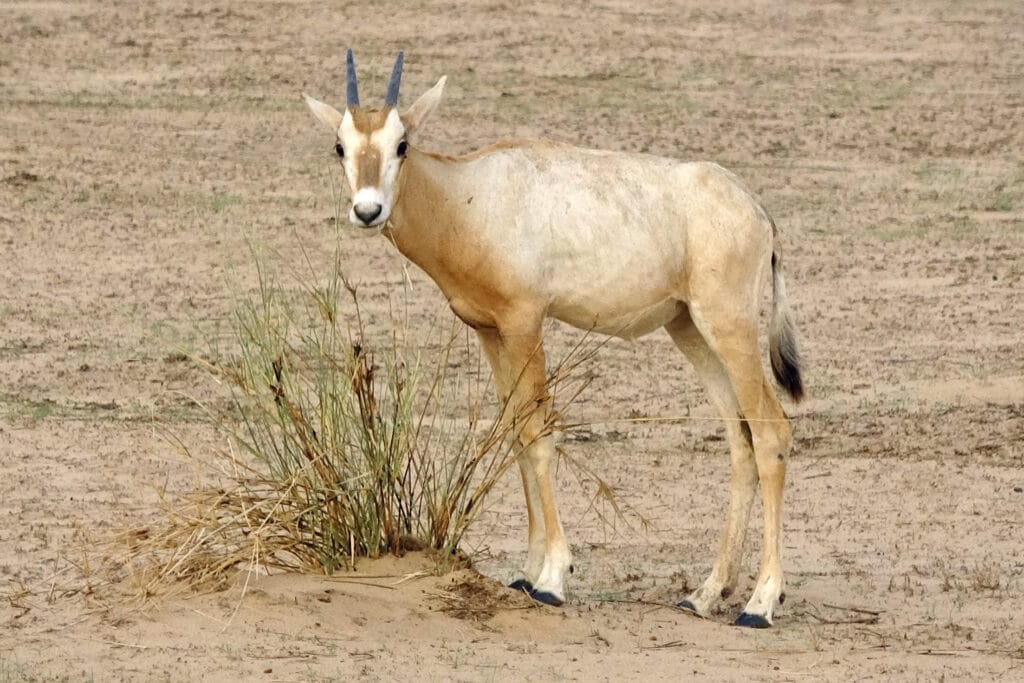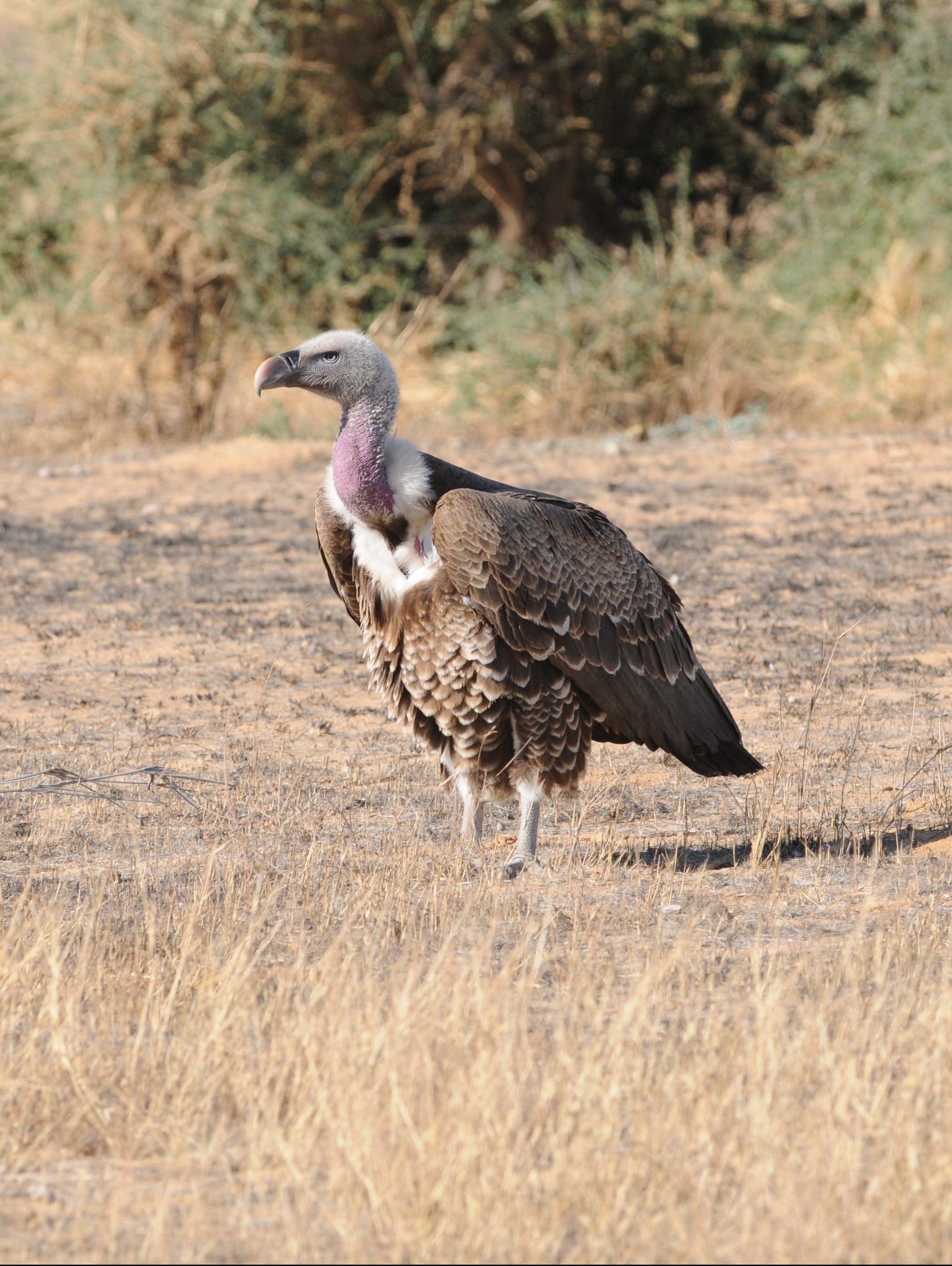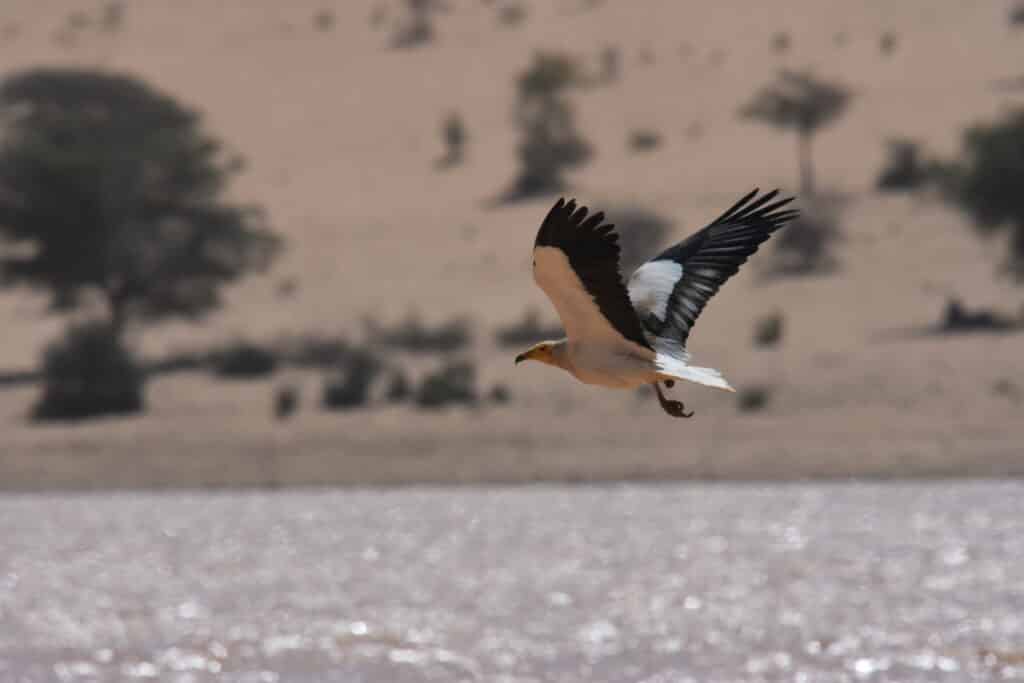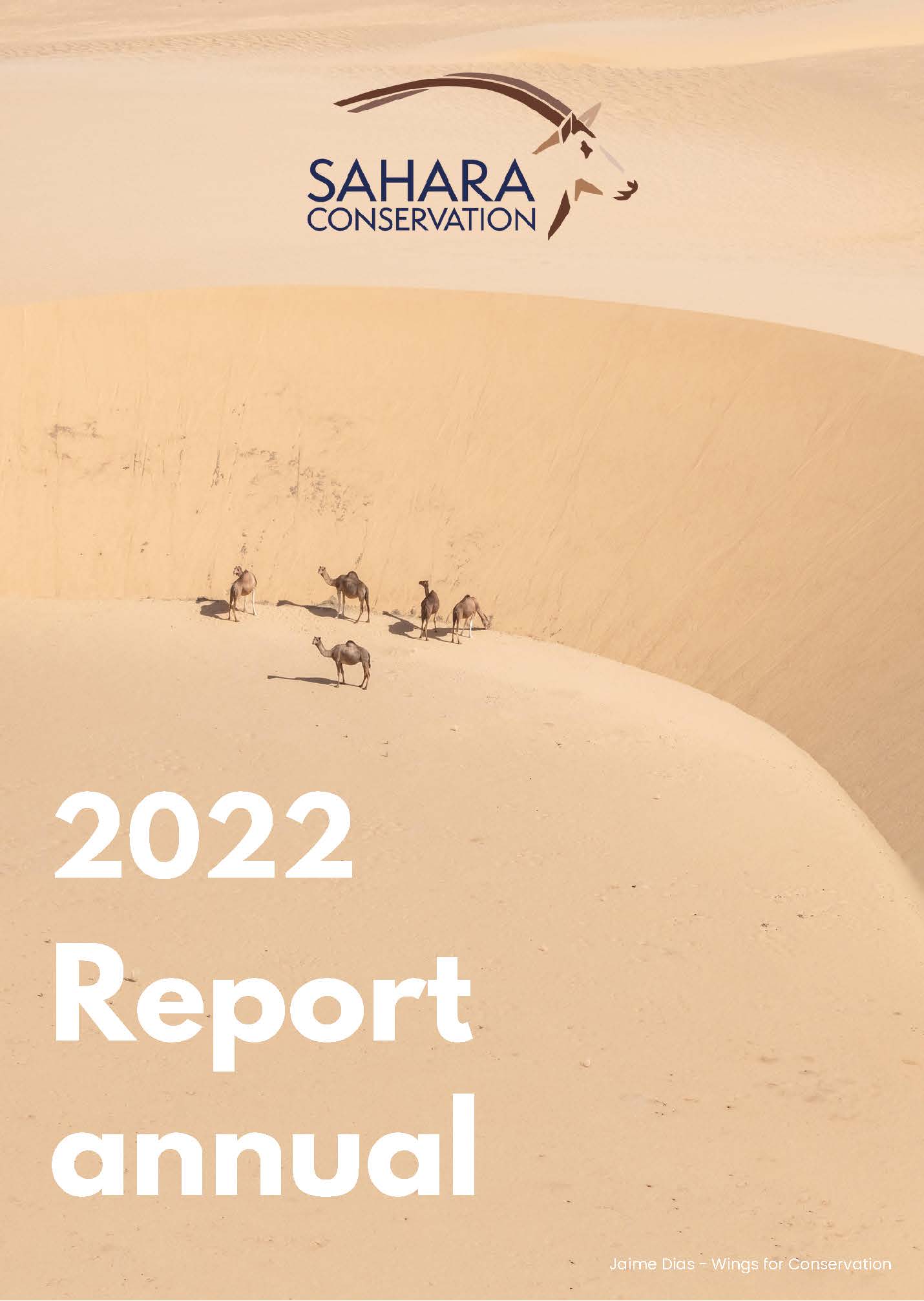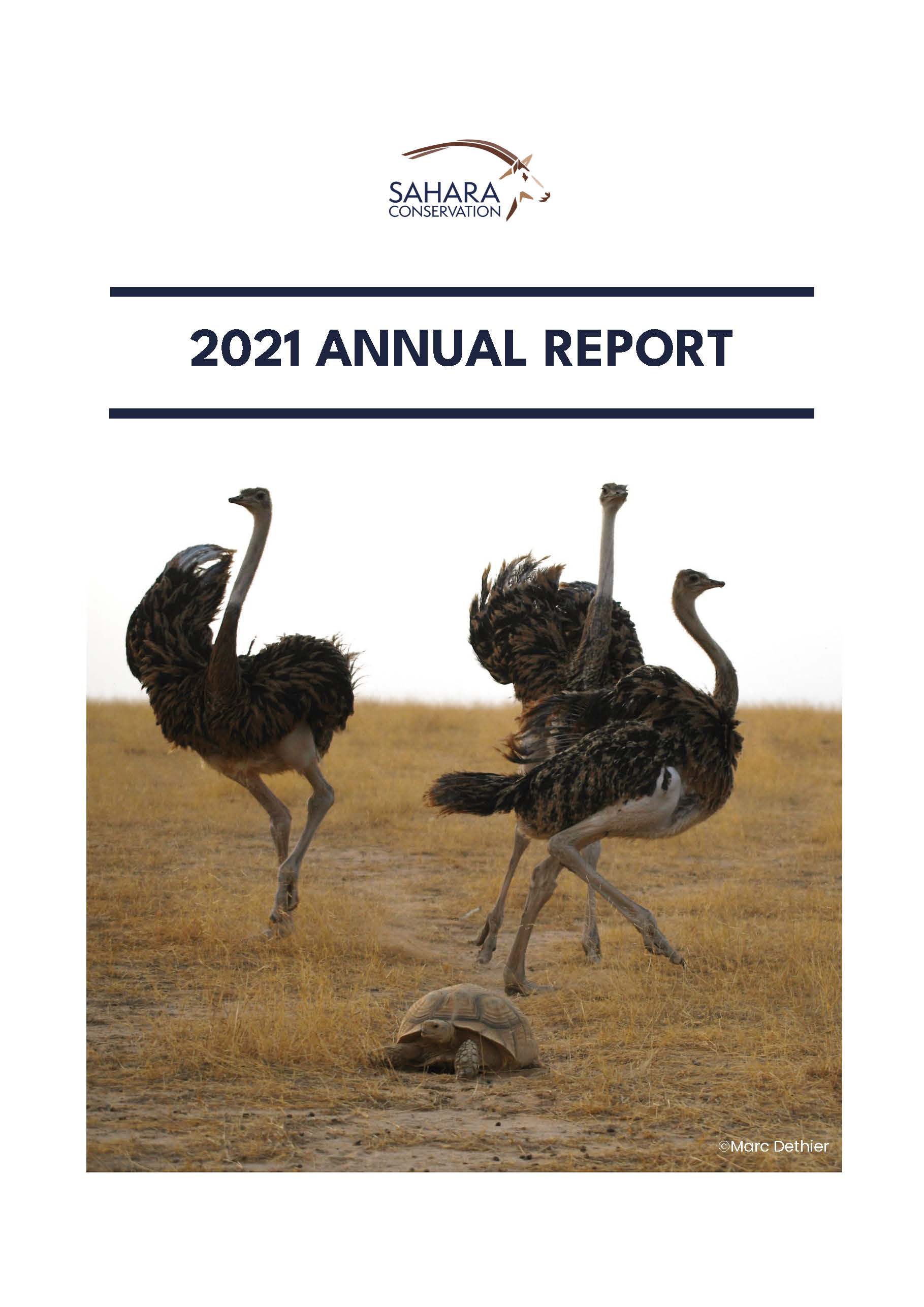Drone is a crucial tool to improve the performance of our ecological monitoring in the field
Overview
Sahara Conservation has been collaborating for years with other organizations, governments, and various stakeholders, to preserve the addax. Given the necessity to save the species now, the addax has became one of Sahara Conservation's priority species and animals will be reintroduced in different places of the Sahara and Sahel thanks to its expertise in this field and to the collective efforts of Sahara Conservation and partners. The long-term goal is to rebuild a free-living population wandering in healthy numbers through their historical range countries.
Sahara Conservation has been working on the addax since it was created over a decade ago. At that time, most of the remained known addax was confined to a vast desert area known as “Tin Toumma” in Niger – officially established in 2012 as the Termit & Tin Toumma Reserve thanks to an intense Sahara Conservation lobbying.
Sahara Conservation also provided strategic support through fundraising and communication to the wildlife authorities in Tunisia for the re-establishment of well-managed herds of addax and scimitar-horned oryx. The country is committed, as part of its national antelope conservation strategy, to re-establish both species in large fenced protected areas. Once viable populations have been established, the long-term vision is to remove fences in appropriate areas to allow true free-ranging herds to be reintroduced.
A big step forward was taken in the last two years with the decision to begin reintroducing the species in unfenced areas in Chad and Morocco on the horizon 2019.
Based on SaharaConservation’s experience and knowledge about addax and antelope reintroduction with the oryx project in Chad, a Memorandum of Understanding was signed between Moroccan wildlife authorities and SaharaConservation in 2018 with the objective of providing support for reintroduction and wildlife monitoring.
SaharaConservation and its partners, including the AZA Addax SSP, Conservation Centers for Species Survival (C2S2) and the Source Population Alliance (SPA), are working towards the reintroduction of addax to former range sites in Chad (such as the Ouadi Rimé – Ouadi Achim Wildlife Reserve, by using the scimitar-horned oryx reintroduction facilities) to reinforce small, isolated sub-populations before they collapse and disappear. In 2019, the scimitar-horned oryx project enters its phase II, precisely switching to a multi-species reintroduction approach that will allow the return to the wild of a first batch of 25 individuals in November of this same year.
The situation is precarious for this species and recovery and recolonization of former range from the remaining small and fragmented wild population is unrealistic at present. Extinction of addax in the wild prevented and where possible viable populations reintroduced to secure habitats.
Addax restored to the Ouadi Rimé-Ouadi Achim reserve in Chad at pilot/feasibility level (25-50 animals).
The main goal of this project is to strengthen the chance of success regarding the first ever addax reintroduction in Africa by tracking 100% of the released addax with GPS/Satellite transmitters over a period of 2 years.
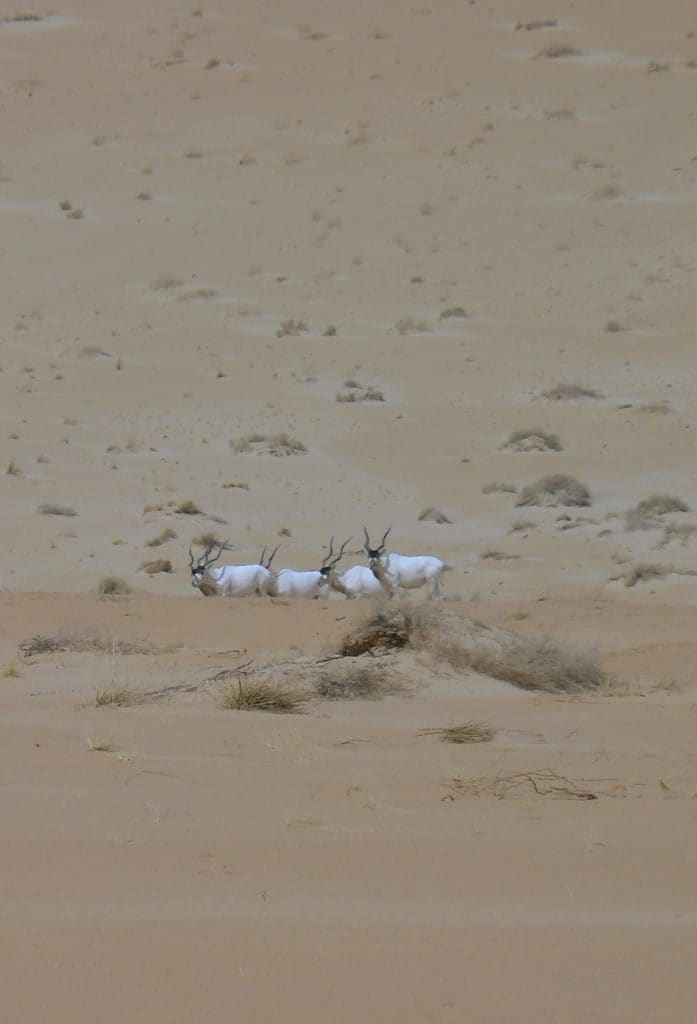
LATEST NEWS ON THE ADDAX
Additional Resources
To learn even more about the project, the following sources are available:
How To Help
Desert species are going through a silent extinction that Sahara Conservation wants to, if not reverse, at least halt. Please help us save the Sahelo-Saharan wildlife and participate in the biggest conservation efforts of all times! Spread the word on this tragedy and/or contribute to our initiatives by making a donation to Sahara Conservation. Every act counts.
- All
- Blog
- Media Coverage
- Stories
Overview
The remaining wild population is spread amongst four known sub-populations - in the Termit Massif and Aïr Mountains in Niger, Manga, and in the Ouadi Rimé – Ouadi Achim Wildlife Reserve in Chad. Sahara Conservation is playing a major role in raising awareness on the conservation status of the species, on the monitoring of these last individuals across the four areas, and on the securing of the remaining populations so they can breed safely and increase in numbers.
Through its different projects on the ground and various ecological monitoring missions in Chad and Niger, Sahara Conservation has always kept an eye on the decline of the dama gazelle in the region and alerted the national authorities and the global conservation community. In 2017, Sahara Conservation developed the use of camera trapping in remote areas of Niger, where some tiny groups of dama gazelles seem to have found refuge . In Chad, the scimitar-horned oryx reintroduction project has had a positive impact on the populations of gazelles living in the Ouadi Rimé-Ouadi Achim Wildlife Reserve since it was implemented there in 2016, thanks to an increased control on some poaching activities in the area. Even though they are relatively safe, there is still a need to improve their monitoring. A mission to translocate a dozen of dama gazelles still living in the wild in the Manga region of Western Chad to the OROAWR is under development in order to secure them as well.
The dama gazelle officially became one of the key focal species of Sahara Conservation overall program in 2018.
The situation of the dama gazelles is of high concern due to opportunistic poaching and a high level of disturbance caused by vehicles crossing its distribution area in both countries. To tackle this situation, Sahara Conservation aims to get the support of the local community by sensitizing them during dedicated workshop and by recruiting community game guards to warrant the protection of the Dama gazelle population from disturbance. The role played by local leaders and community game guards to secure this kind of approach from the reserve’s traditional land-users has been a crucial achievement so far and we think it will continue if we can expand the project’s reach and provide additional technical and financial support to implement the appropriate actions.
Sahara Conservation is also playing a major role in raising awareness with the governments of Chad and Niger and getting their full endorsement of the regional action plan drafted by Sahara Conservation, ZSL, IUCN/SSC Antelope Specialist Group, CMS, Noé, Niger and Chadian national agencies.
Through its various dama gazelle-related initiatives, Sahara Conservation hopes that, in the near future:
- A significant number of vulnerable, genetically-valuable dama gazelles is captured in the Manga in Chad and transferred to safety.
- The dama gazelle population in the Ouadi Rimé-Ouadi Achim reserve in Chad is increasing and free from poaching.
- The monitoring and protection of the dama gazelle population in the Aïr Mountains, Niger, are improved.
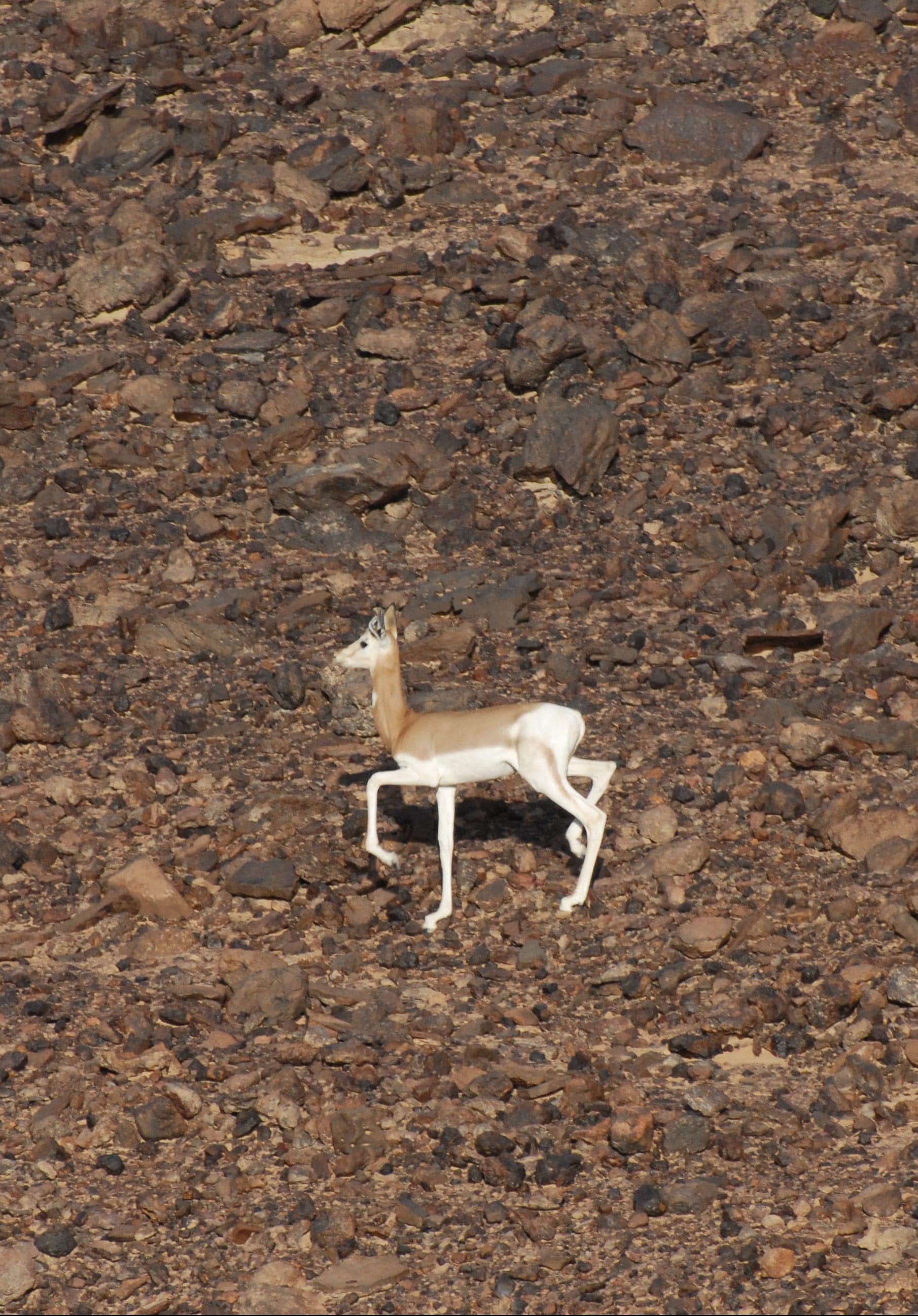
Collaboration with locals
An Elusive Species
The dama gazelle is a symbol of beauty and elegance in Chad, and even elsewhere. Particularly vulnerable to poaching since the use of automatic weapons and vehicles has increased in the Sahara and Sahel, it is extremely rare to observe the species directly in the wild. Pastoralists and nomads regularly provide important information on the presence of animals or even poachers, especially in Chad.
In Niger, the particularly isolated situation of the sites where the dama gazelles have found refuge, and dedicated sensitization campaigns lead by Sahara Conservation amongst the locals, seem to have prevented the camera traps from being damaged or stolen. Once again, no conservation result can be obtained without the participation of the people living on site and Sahara Conservation and it is especially true in the case of dama gazelles conservation.
LATEST
NEWS
ON THE
PROJECT
Additional resources
To learn even more about the project, the following sources are available:
How To Help
Desert species are going through a silent extinction that Sahara Conservation wants to, if not reverse, at least halt. Please help us save the Sahelo-Saharan wildlife and participate in the biggest conservation efforts of all times! Spread the word on this tragedy and/or contribute to our initiatives by making a donation to Sahara Conservation. Every act counts.
- All
- Blog
- Stories
Overview
The goal of the project is to preserve the biodiversity of the Ouadi Rimé - Ouadi Achim Wildlife Reserve in an integrated and sustainable way.
SaharaConservation has been working with the Chadian authorities to conserve the biodiversityof the Ouadi Rimé-Ouadi Achim Wildlife Reserve (OROAWR) since 2001. Various missions and studies have shown the need to improve the management of the OROA wildlife reserve and the management of its biodiversity.
In 2015, SaharaConservation and its partners began the reintroduction of the Scimitar-horned Oryx (Oryx dammah). The long-term success of this reintroduction and its extension to other species is based on effective and sustainable management of RFOROA.
In 2016, the Ministry of the Environment of Chad and SaharaConservation signed a Memorandum of Understanding, aimed at “strengthening relations between this Ministry, through the Directorate of Wildlife Conservation and Protected Areas (DCFAP), and SaharaConservation, for the conservation of wildlife, habitats and the natural heritage of the Sahara and Sahel in Chad.”
The project « Support for the development of the Ouadi Rimé – Ouadi Achim Wildlife Reserve and the sustainable management of its biodiversity (POROA) » is part of the Support Program for the Preservation of Biodiversity and Wildlife. fragile ecosystems of Central Africa (ECOFAC VI) funded by the 11th European Development Fund (EDF).
The long-term survival of the Reserve’s fauna and the integrity of its habitat, but also the preservation of this pastoral area of high economic and vital value for a large number of pastoralists depend on finding solutions that reconcile pastoralism and conservation.
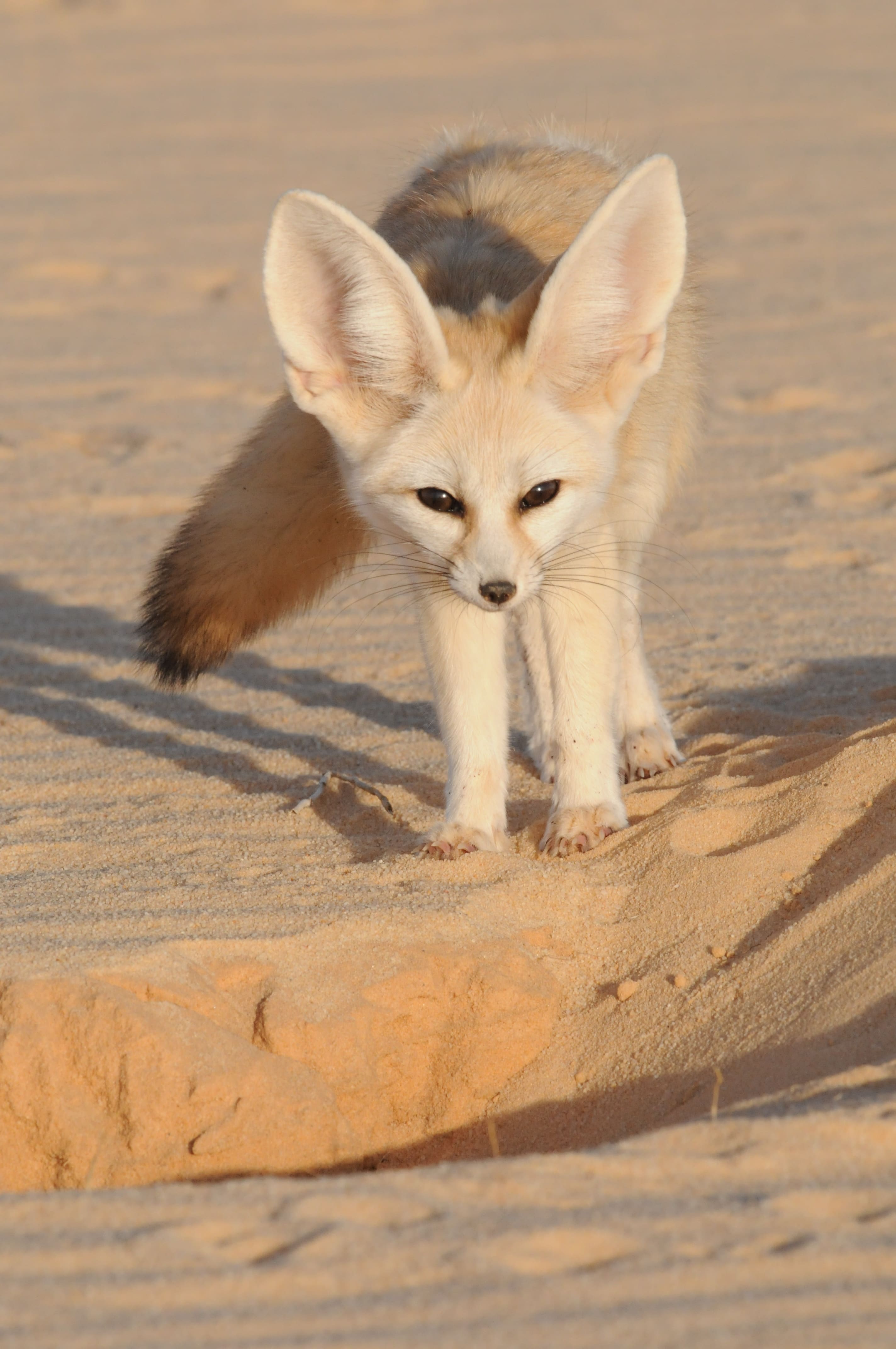
Overview
As one of its first conservation projects undertaken in the Sahara-Sahel region, the North African Ostrich Recovery Project is fully part of Sahara Conservation's DNA.
Sahara Conservation goal is to produce enough birds at its breeding facility in Kellé, Niger, to begin returning small numbers of ostrich safely to the wild.
The North African ostrich (Struthio c. camelus) is one of four extant sub-species of ostrich. It alone inhabits the harsh environment of the Sahara and bordering Sahel. A century ago this race of ostrich inhabited the entire periphery of the Sahara both north and south, a total of 18 countries; today its range has been reduced to just six. The North African ostrich is critically endangered and without urgent conservation action may soon follow its cousin the Arabian ostrich into extinction.
In November 2008, Sahara Conservation began working with a local Nigerien wildlife organization – CERNK – to provide technical support and an improved ration to the ostriches they hold. During the two previous years these ostriches failed to produce any viable offspring. However, after an adjustment and recuperation period three female ostriches produced 49 eggs in 6 weeks. Sahara Conservation has also assisted other local owners, including Niger’s National Zoo with their ostrich breeding.
Sahara Conservation, The Saint Louis Zoo, the AZA Struthioniformes Taxon Advisory Group and CERNK decided to partner on a groundbreaking effort to save the endangered North African ostrich and aid its recovery in Niger.
Sahara Conservation collaborates actively with Niger in their efforts to save the species. There are 4 captivity breeding sites for the species in Niger, amongst which Kellé’s site, located in the South East of the country (near Zinder), offered the best potential to develop the infrastructures needed to develop new populations of North African ostriches. In 2011, Niger entrusted Sahara Conservation with the management of the site. Today, Sahara Conservation fully provides the human resources, food, infrastructures development needed for its functioning. In 2016, it assisted the government of Niger for the development of a national conservation strategy to increase the chances of a successful reintroduction (and in particular to encourage the exchange of ostrich and eggs between the different sites in order to increase the genetic pool). As part of this national strategy, Sahara Conservation also supports the other sites with their food, caring, and monitoring of individuals.
Impressive results have already been achieved since Sahara Conservation engaged in the project. There has been a significant increase in the number of individuals in each site, and well-established partnerships with the local private owners from the other sites in Niger have allowed the securing of the ostrich populations throughout the country. The project has recently entered a new phase with the identification of two release sites in Niger, one in the Tilala valley next to Kellé, and another one in the Gadabeji Biosphere Reserve in central Niger. The ultimate goal is to keep improving the breeding success rates of the birds and begin return individuals to the wild in small numbers on the horizon 2020.

"This project is a model-in-the-making of participatory, grassroots conservation and a catalyst for the conservation of other endangered species. It demonstrates and reinforces the fundamental relationship required between successful conservation action and the local people that drive, implement and sustain it."
Bill Houston - Vice-Chair of Sahara Conservation's board
Raising Awareness
Simple Fade With Icon
Sahara Conservation has been instrumental in raising awareness with the local community, in particular the young generations, and support for the development of the national strategy for the ostrich’s conservation.
Long-term success depends on empowering and building the capacity of local communities to look after their natural resources and this project is as much about achieving this as it is about saving an endangered species; they are intrinsically linked.
Sahara Conservation has now deep connections with the villages around the ostrich site and visited schools to provide environmental education to the children with a focus on the North African Ostrich. It regularly facilitates workshop with officials and local stakeholders to build up the conservation strategy for the species.
LATEST
NEWS
ON THE
PROJECT
Resources
To learn even more about the project, the following sources are available:
Help To Help
Desert species are going through a silent extinction that Sahara Conservation wants to, if not reverse, at least halt. Please help us save the Sahelo-Saharan wildlife and participate in the biggest conservation efforts of all times! Spread the word on this tragedy and/or contribute to our initiatives by making a donation to Sahara Conservation. Every act counts.
- All
- Blog
- Stories
Presentation
With a distribution that once extended unbroken across the sub-desert belt of Africa, from Mauritania and Morocco in the west to Egypt and Sudan in the east, the scimitar-horned oryx disappeared from Sahelian grasslands more than 30 years ago due to overhunting, exacerbated by periods of severe drought. The Scimitar-horned oryx were last seen in the wild in the 1980s. In 2000, the species was assessed as Extinct in the Wild by the IUCN Red List of Threatened Species.
A large-scale conservation effort drawing on ex situ populations was needed to restore this species to the wild.
- Scientific name: Oryx dammah
- Red List Status: Endangered
- Population: 600 in the wild (estimation by end of November 2023)
- Habitat: Sahelian grasslands
The scimitar-horned oryx is a flagship species for an entire community of desert wildlife, plans and habitats.
They are known for having long curved horns. They have a white coat with brown chest and black markings on their forehead and nose. They weight between 90 and 210 kg.
Scimitar-horned oryx become inactive in the heat of the day, seeking shade and digging out scrapes in the sand to reduce exposure to drying winds. They graze primarily during the early morning hours and the late evening into the night.
They can go for significantly long periods without water, making them uniquely adapted to their arid desert environment.
Beginning in 2008, Sahara Conservation spearheaded international efforts to develop a global strategy for the restoration of the scimitar-horned oryx and together with a large number of stakeholders developed a suite of tools for the selection of suitable conservation sites and the establishment of criteria critical for successful outcomes.
In 2013, following a series of workshops and feasibility studies led by the Environment Agency – Abu Dhabi, Sahara Conservation, the Zoological Society of London and the Smithsonian’s National Zoo and Conservation Biology Institute, Ouadi Rimé-Ouadi Achim Faunal Reserve (OROAFR) in central Chad, was selected for the reintroduction program. This vast protected area set up in the 1960s specifically for the conservation of oryx and other desert species is one of the largest in the world and harbors some of the last remaining viable populations of dama and dorcas gazelles.
Under the vision and leadership of EAD, and in partnership with the Government of Chad, a carefully curated “World Herd” of scimitar-horned oryx was established in Abu Dhabi – the descendants of animals originally collected from Chad, and in collections and zoos in the US, Europe and the Middle East – would be reintroduced into their native range.
In March 2016, the first group of 25 scimitar-horned oryx were flown to Chad and transferred to pre-release pens in OROAFR for acclimatization. They were successfully released into the wild in August of the same year.
In September 2016, the first scimitar-horned oryx calf was born in Chad in at least 30 years. Since then, reintroduced oryx have produced more than 500 oryx calves.
Today, 285 oryx have been brought into Chad and the wild population is now estimated to be at least 600 animals in OROAFR.
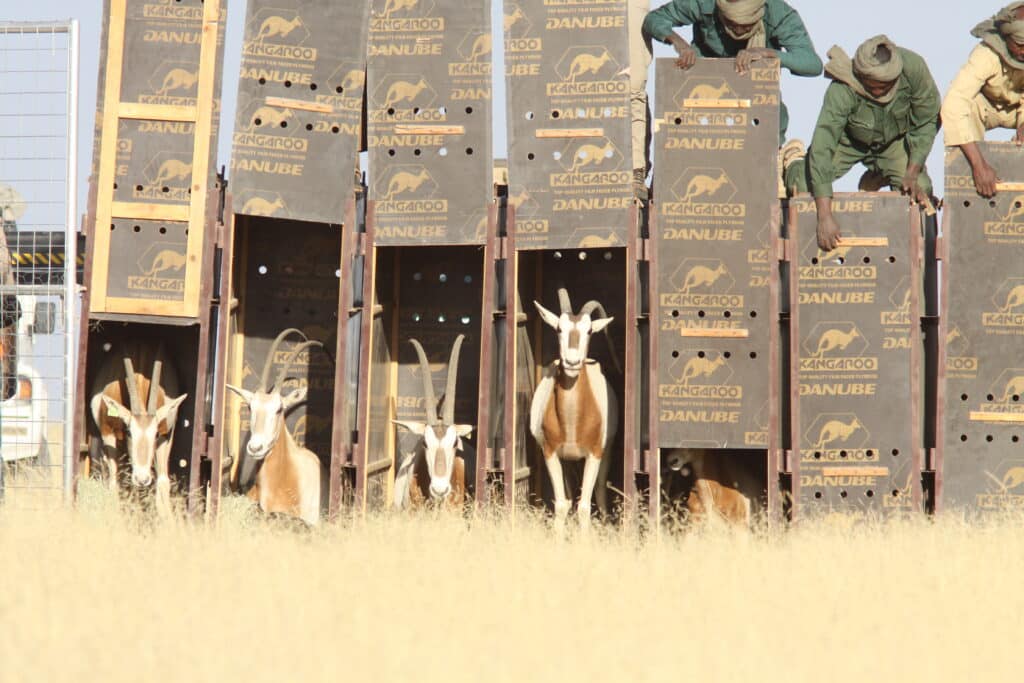
POST-RELEASE MONITORING
EAD and Sahara Conservation brought together specialists from the relevant domains (husbandry, genetics, transport, veterinary, etc.) to work on the project. They agreed on and planned specific action together with the Government of Chad. Today, thanks to this fruitful collaboration, new monitoring methods have been developed to meet the specific needs of the project. These include tagging and satellite collaring of released animals, together with a whole suite of field-based activities to monitor the oryxs’ behaviour, dispersion, reproduction and feeding preferences.
ACHIEVEMENT
After more than three decades of absence, the scimitar-horned oryx is back in the wild and roaming freely in the grasslands of the Ouadi Rimé – Ouadi Achim Faunal Reserve.
On December 11th, 2023, the International Union for the Conservation of Nature Red List of Threatened Species announced the scimitar-horned oryx has been reclassified from Extinct in the Wild to ‘Endangered’.
The downlisting of the oryx marks a milestone in one of the most ambitious conservation programs ever undertaken and contributes to putting the Sahara and the Sahel more firmly on the global conservation agenda. The successful reintroduction of the scimitar-horned oryx is paving the way for the recovery of other critically endangered species, like the addax and the dama gazelle, which are already benefitting from the conservation efforts in Chad.
This fantastic result is the fruit of long-term, dedicated cooperation among partners. It also reminds us that efforts must continue to secure the long-term survival of what is still a threatened species. Further work is required to increase sustainability of the restored oryx population and to improve the management and integrity of the habitat it any many other species need to thrive in the wild.
ONGOING EFFORTS
The success of the project has helped expand the program in OROAFR, which now includes other Saharan species of the reserve such as Addax, Dama gazelle, and North African ostrich.
Combined efforts are underway to improve the management and protection of the reserve and build the conditions necessary for the mutually beneficial and successful development of both human and wildlife interests.
"Since 2000 the Scimitar-horned Oryx has been classified as "Extinct in the Wild" by the International Union for the Conservation of Nature (IUCN) Red List. There have been no sightings for more than 25 years due to un-regulated hunting, loss of habitat and lack of resources for conservation. Leading the program which endeavours to reinstate a viable population of this once extinct-in-the-wild majestic creature in its home range of Chad is dreams come true. The releases will provide us with invaluable data to develop a self-sustaining wild population"
Environment Agency - Abu Dhabi
A strong local support
Extinction Need Not Be Forever!
One of the most crucial components of the project is the collaboration with the local communities, the Government of Chad, the national wildlife authorities, administrative local authorities, and traditional leaders. Sahara Conservation regularly meets with them unformally during fieldwork, sensitization campaigns on the ground, or more officially through workshops and officials gatherings. As of today, these very important stakeholders help the project in various ways, from providing information on their oryx sightings or reporting on the existing livestock diseases to fighting bushfires or preventing poaching. Recruiting and training local staff is a big priority to Sahara Conservation. As of today, the project is very well seen and received. A lot of the locals, especially amongst the elders, have witnessed the extinction of the scimitar-horned oryx decades ago and are now thrilled to see the species back in the reserve.
LATEST
NEWS
ON THE
PROJECT
Resources
To learn even more about the project, the following sources are available:
- EAD’s project page
- Videos on EAD’s Youtube here and here
How To Help
Desert species are going through a silent extinction that Sahara Conservation wants to, if not reverse, at least halt. Please help us save the Sahelo-Saharan wildlife and participate in the biggest conservation efforts of all times! Spread the word on this tragedy and/or contribute to our initiatives by making a donation to Sahara Conservation. Every act counts.
- All
- Blog
- Stories
Vultures Activities Overview
Sahara Conservation objective is to sensitize the local community about the vulture decline in Niger and Chad and work closely with the traditional hunters to get a better understanding about the factors contributing to the decline in vulture populations in Niger and the neighboring countries, by learning more about traditional hunting practices and trade networks from the local hunters.
Sahara Conservation has been monitoring lappet-faced vulture nests at Termit and Tin Toumma National Nature Reserve since 2008 and has collected many data on the vultures in Niger and Chad. In regards of the dramatic vulture decline in the Sahel, the need to monitor the breeding populations and understand the foraging ranges and resource areas for the adults of these populations and the survival rates of young birds in the breeding colony is more important than ever.
The Sahel and Sahara are on the flyway of the Egyptian vultures migration routes as they fly over Chad and Niger every year, from the Balkans and in particular from Bulgaria and Greece. The Egyptian Vulture is facing an important decline worldwide, and the Balkans have not been spared: from the hundreds of pairs historically present in the peninsula, about 70 pairs only are remaining, the population being victim of a 7% decline yearly for the past 30 years. To protect the species along its flyway, SaharaConservation is participating in the Egyptian Vulture New LIFE project funded by the European Union and initiated as an innovative collaboration between several partners including the Bulgarian Society for the Protection of Birds – BSPB.
SaharaConservation and the Nigerien wildlife authorities will gain a better understanding of the cultural attitudes of those responsible for vulture poaching, the traditional uses and value of vulture parts in the black market, and any local lore about the birds that can be factored into a plan to mitigate their decline.
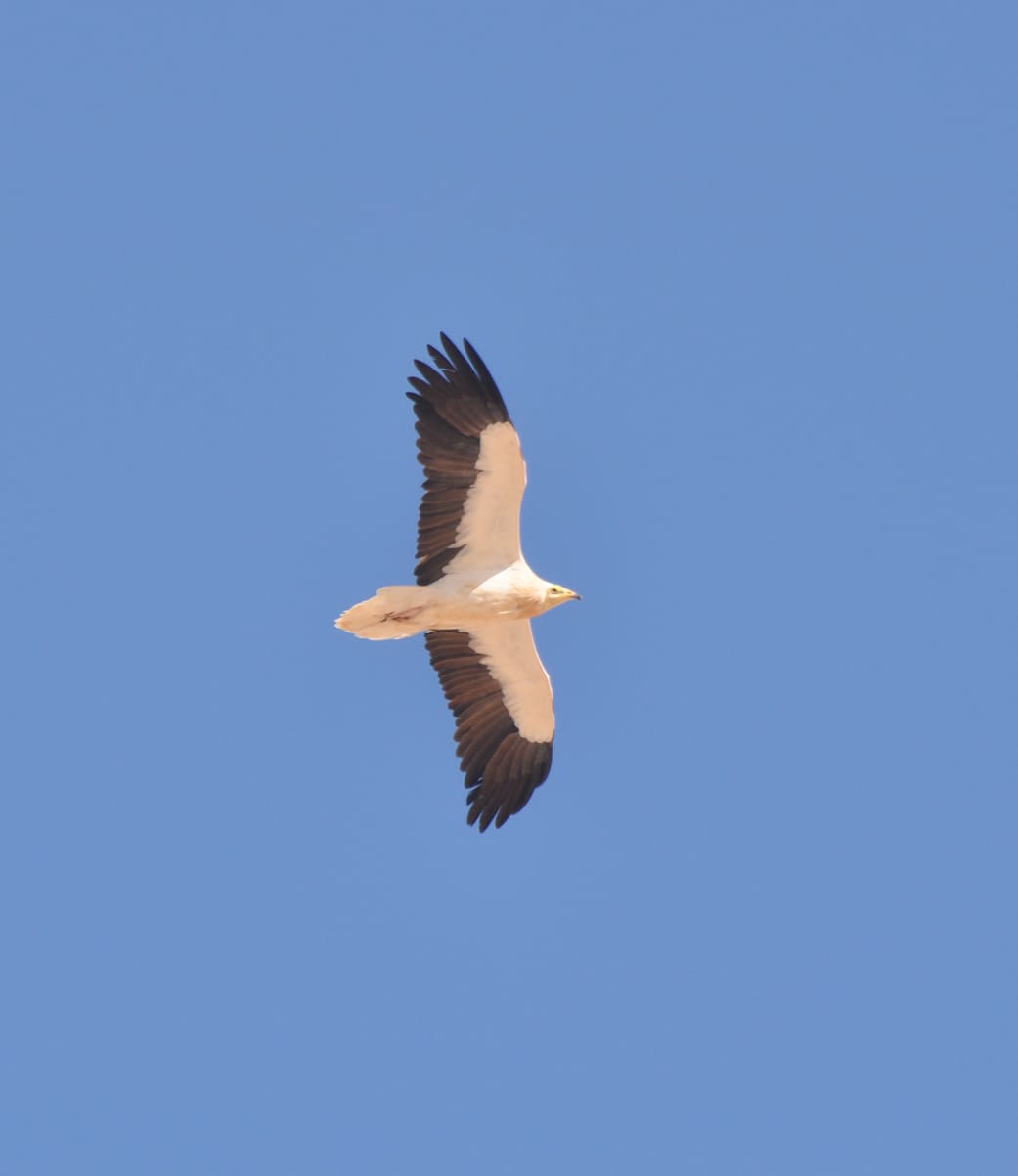
Working On Bustards
Know Them More To Protect Them Better
Sahara Conservation aims to improve the knowledge about the distribution and the ecology of bustards in Chad and Niger. In Niger, Sahara Conservation has been collected many data on two species of bustard: the Nubian bustard and the Arabian bustard. However, there is still little known about the distribution and seasonal movements of these two species and in particular the Arabian bustard which is highly threatened by poaching. With partners, Sahara Conservation worked to improve information on genetics, distribution and seasonal movements of the Arabian bustard in Niger, using notably GPS/Satellite transmitters on the birds.
Sahara Conservation records systematically during the fieldwork direct sightings of all the bustard species and in particular the Nubian bustards and the Denham bustards in Chad during their seasonal migration in the wet season. Sahara Conservation aims to improve the knowledge about the distribution and the ecology of these two species in the near future by tagging them as well with GPS/Satellite transmitters.
LATEST
NEWS
ON THE
VULTURES
Resources
To learn even more about the project, the following sources are available:
How To Help
Desert species are going through a silent extinction that Sahara Conservation wants to, if not reverse, at least halt. Please help us save the Sahelo-Saharan wildlife and participate in the biggest conservation efforts of all times! Spread the word on this tragedy and/or contribute to our initiatives by making a donation to Sahara Conservation. Every act counts.
- All
- Blog
- Stories
